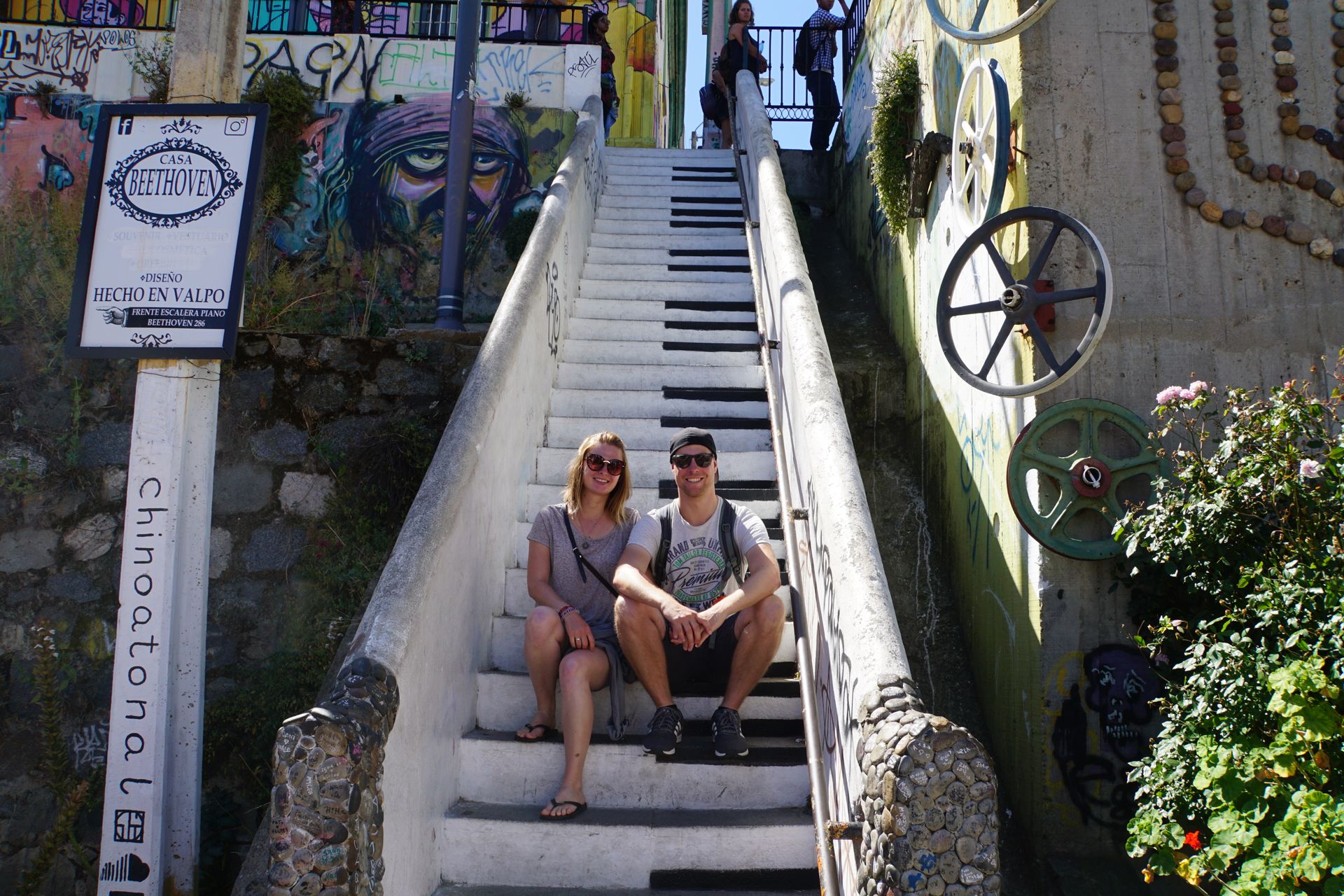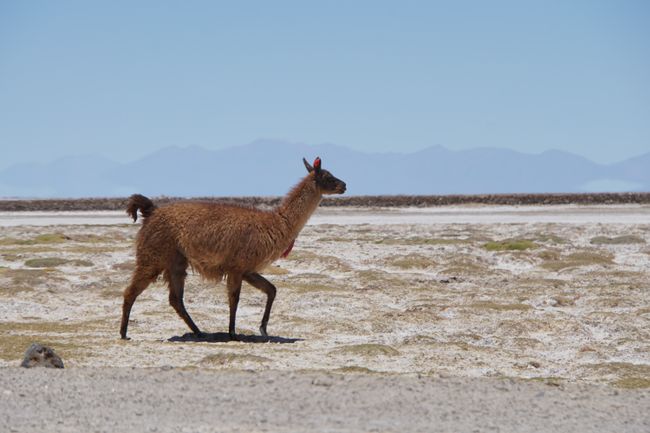Hội An and Hué
Публикувано: 11.04.2019

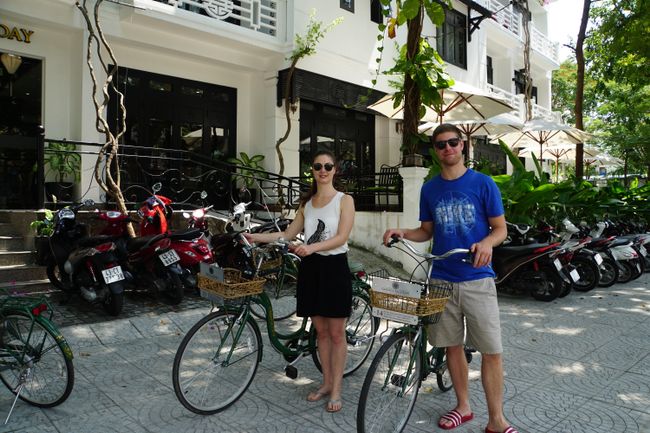
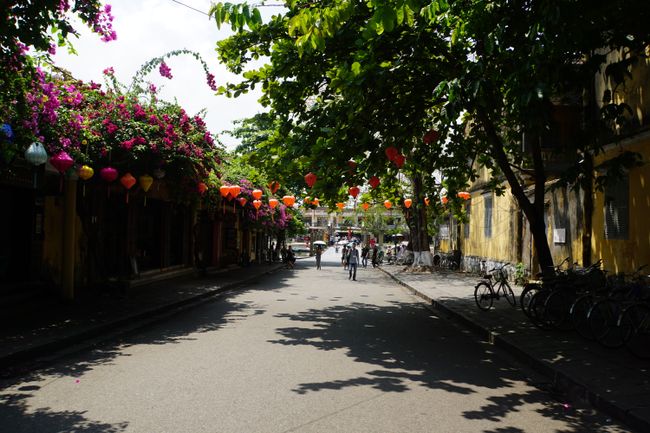
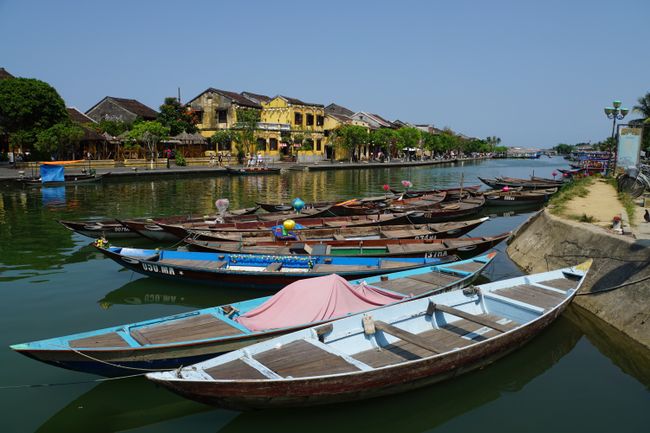
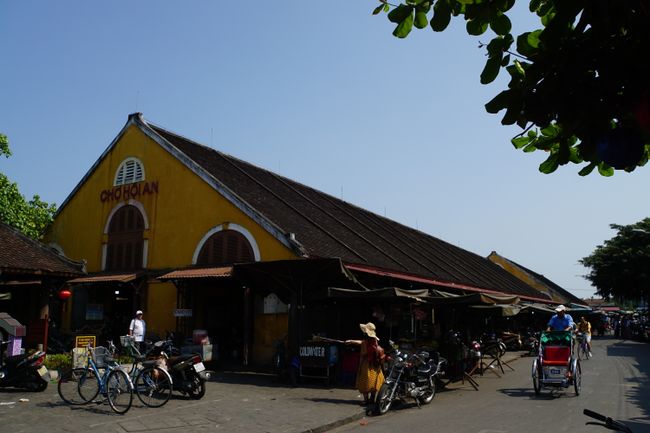
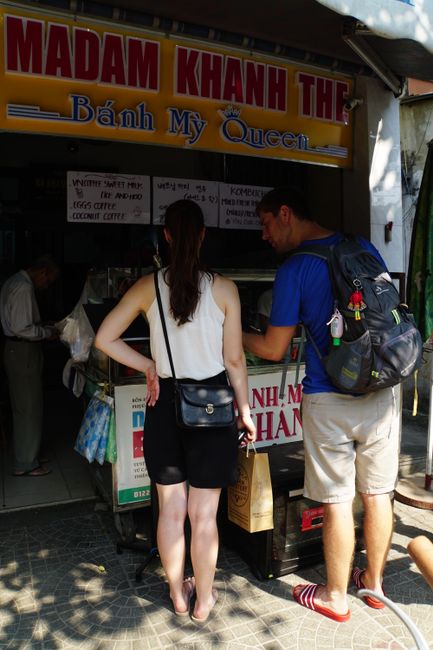
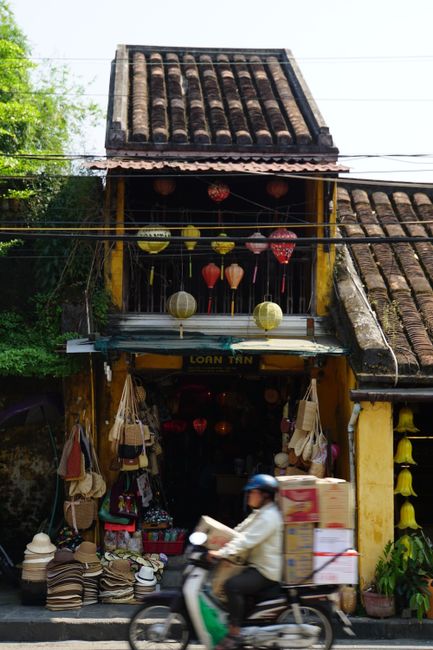
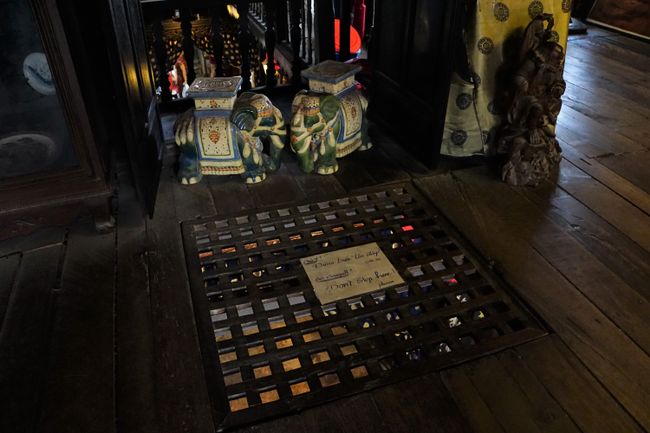
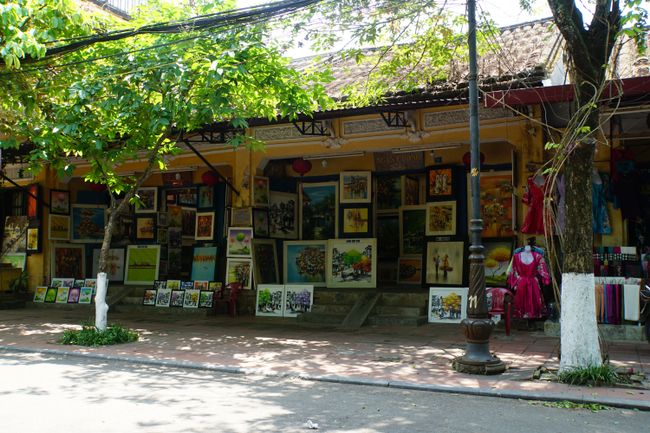
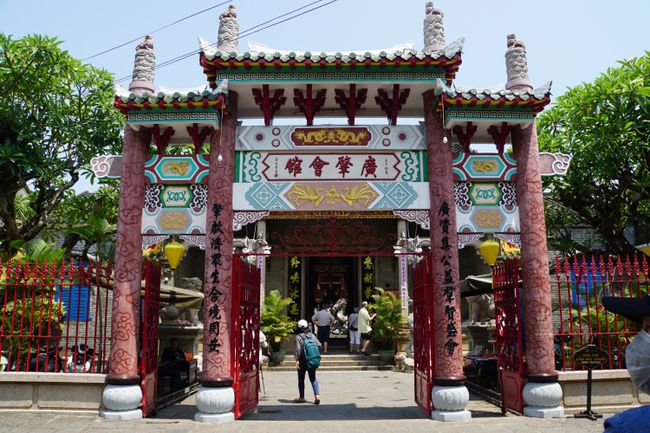
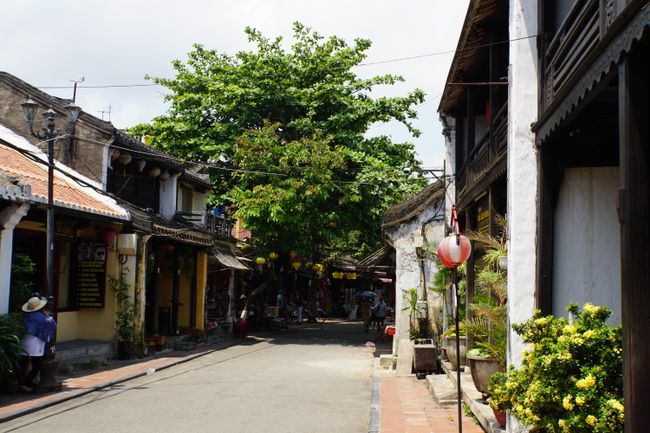
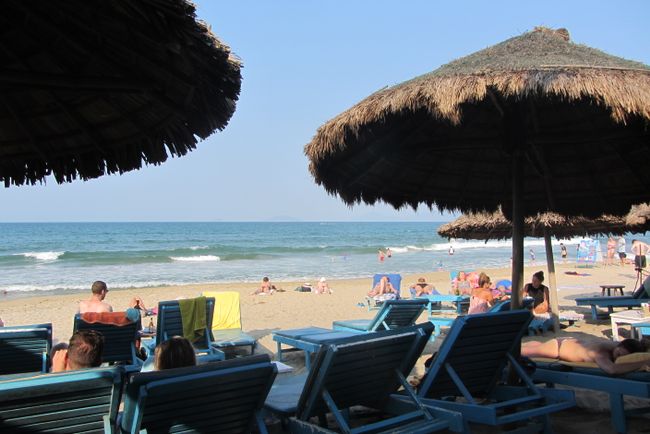
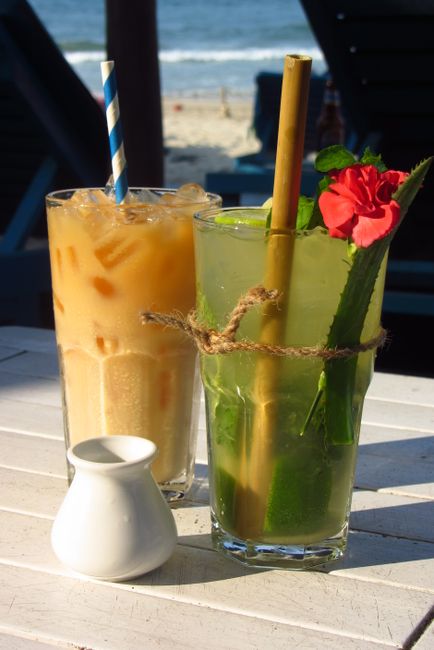
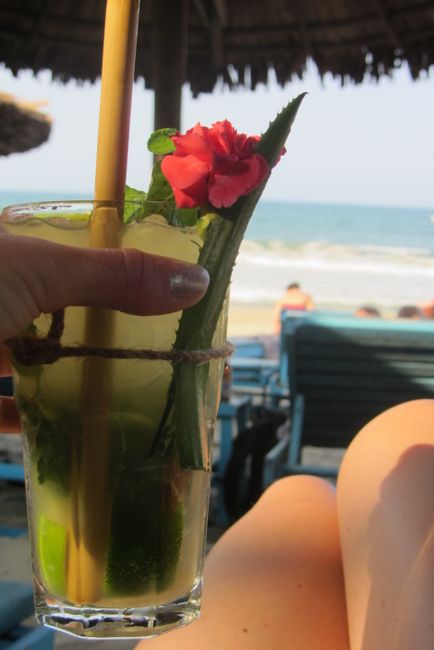
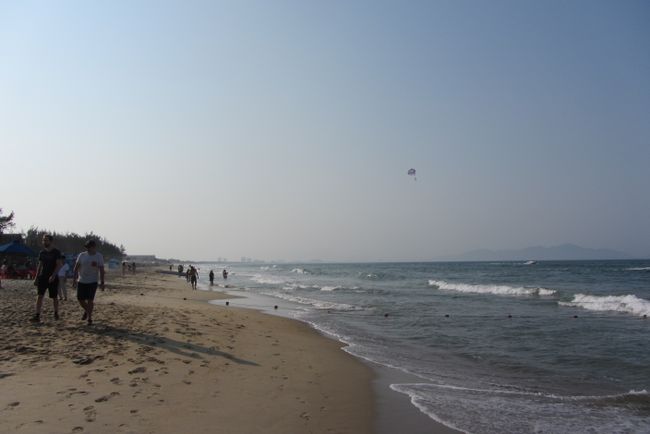
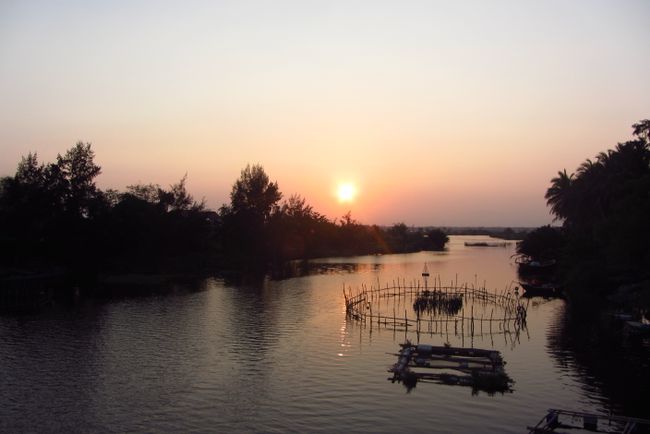
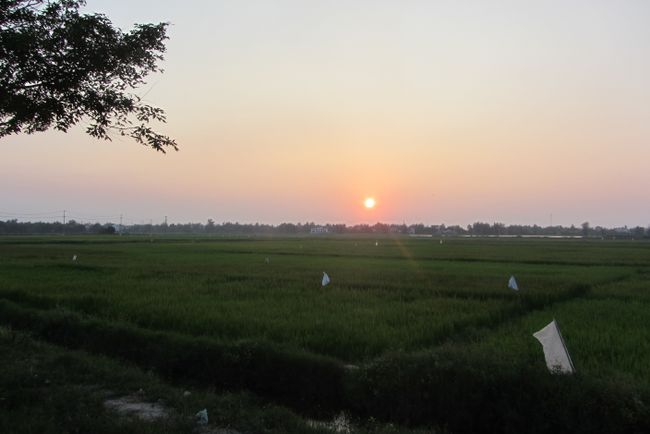
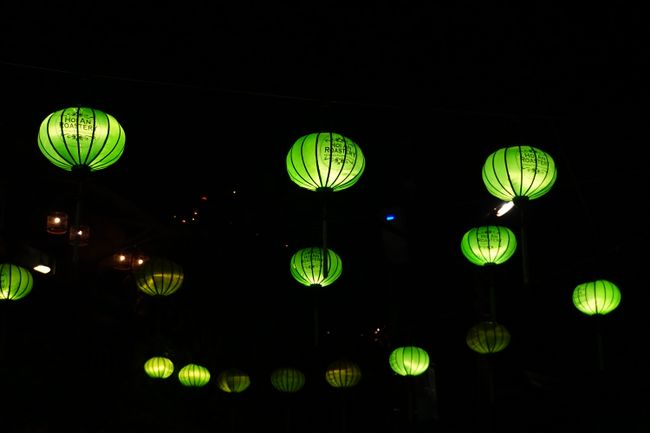
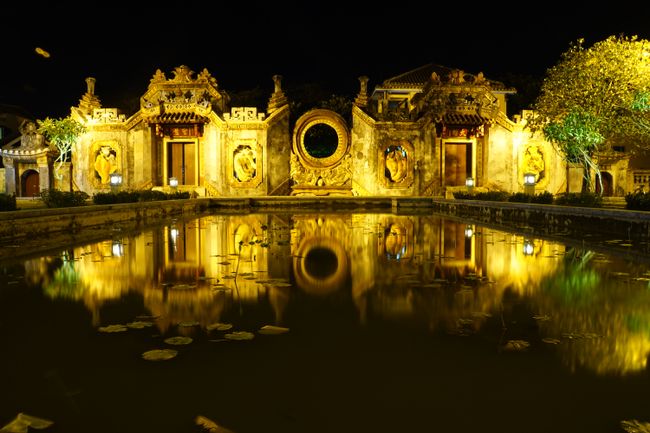
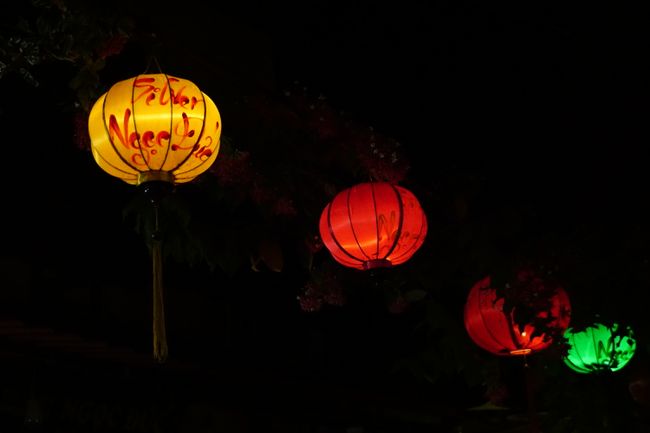
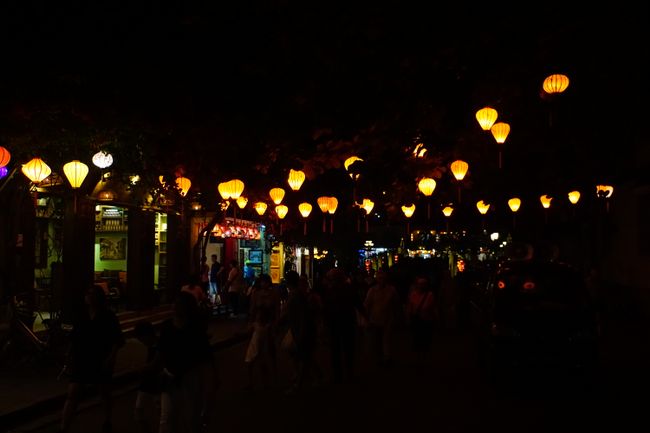
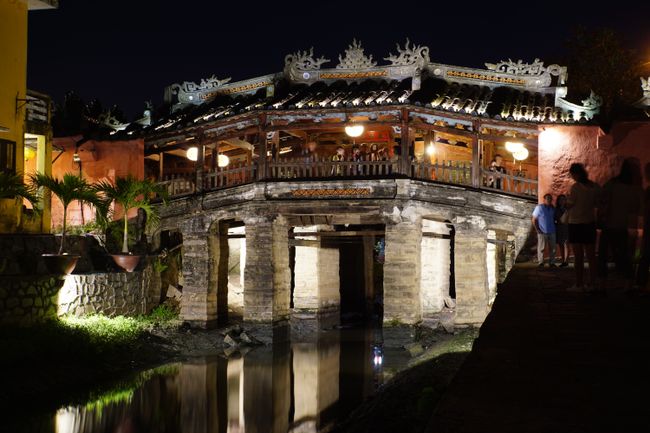
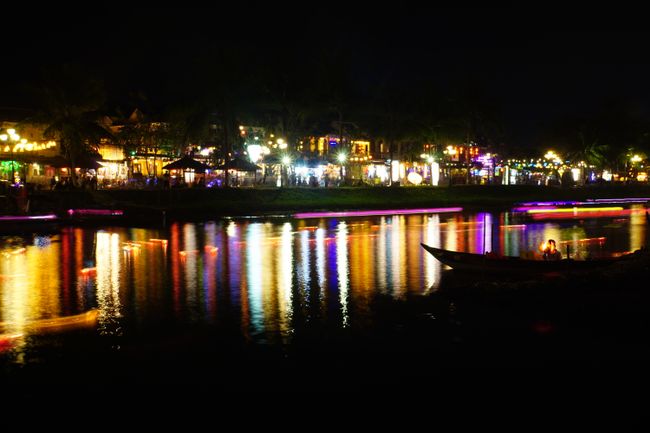
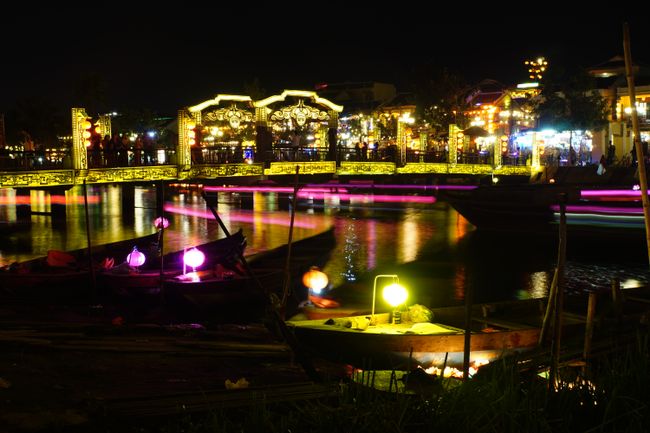
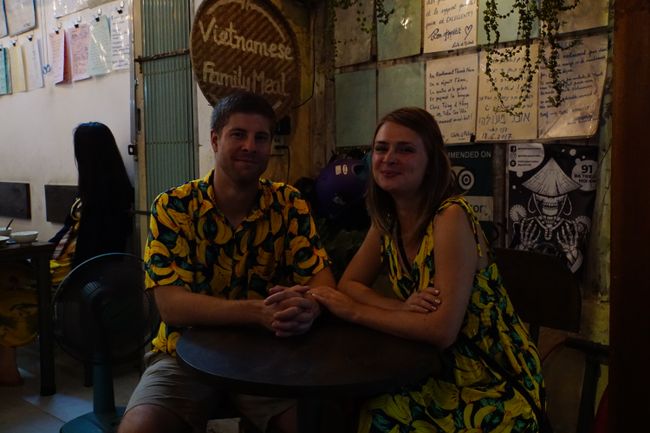
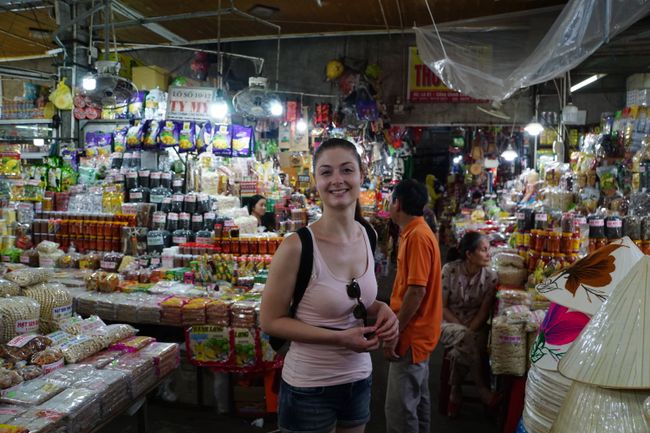
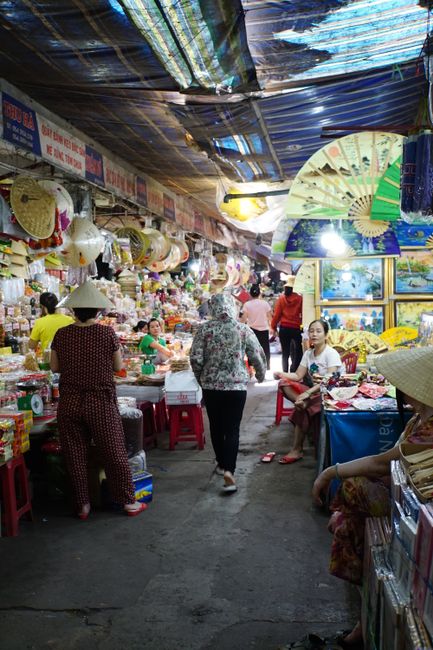
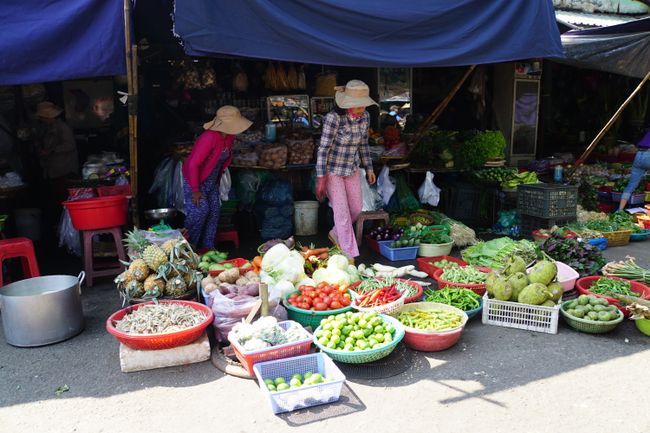
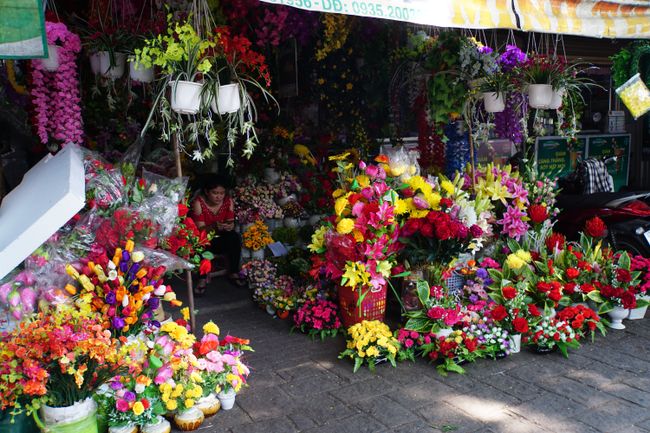
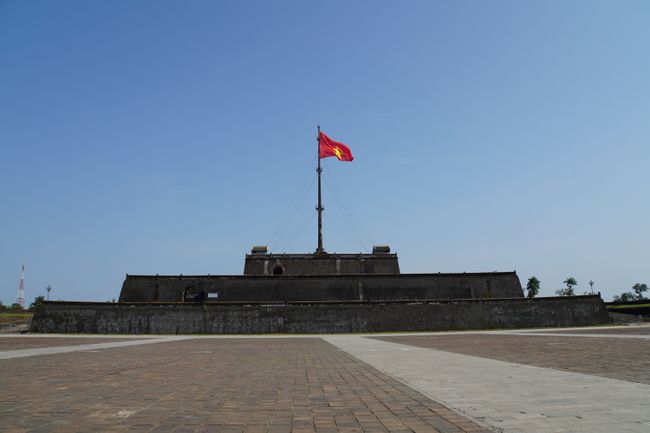
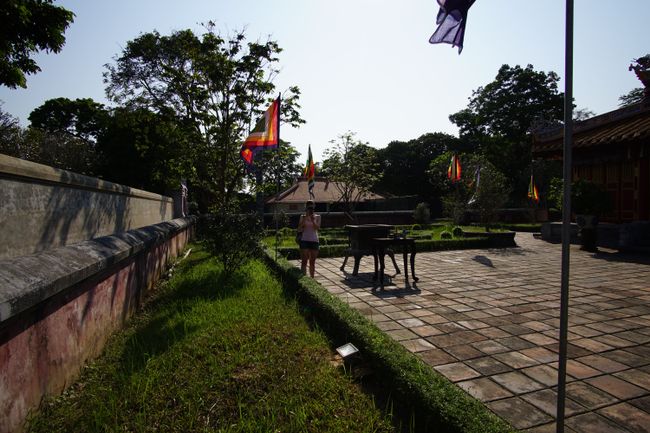
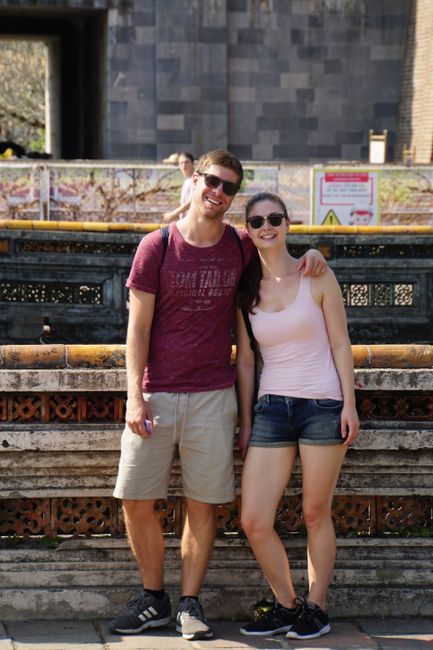
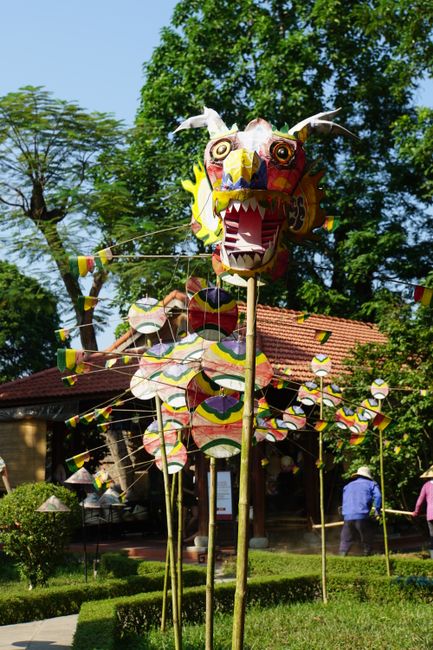
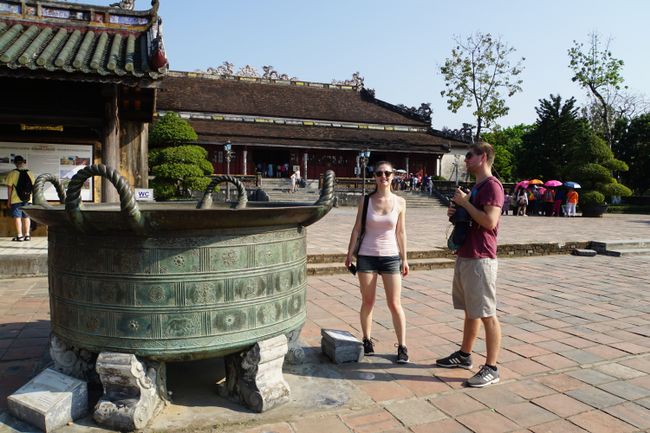

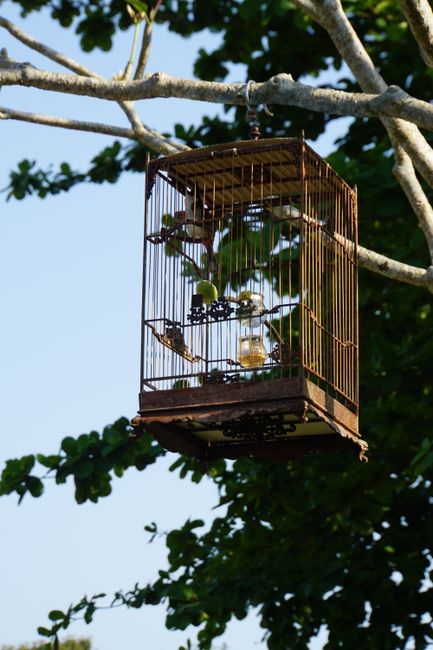
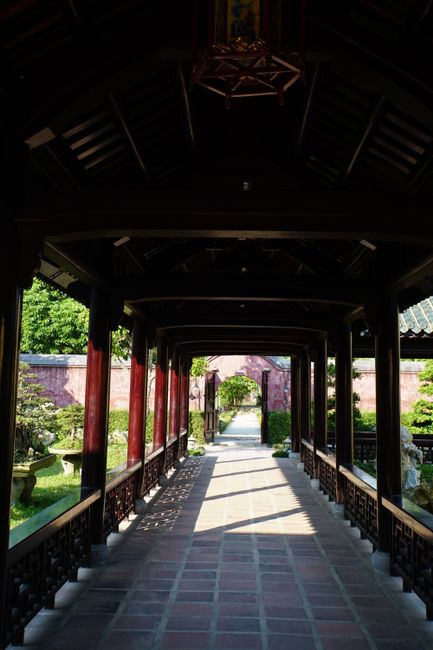
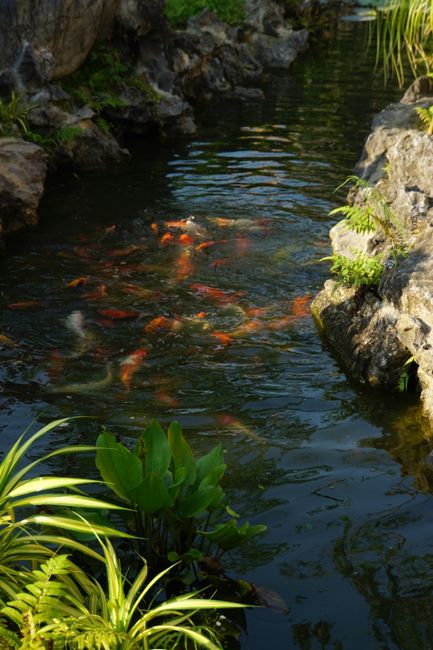
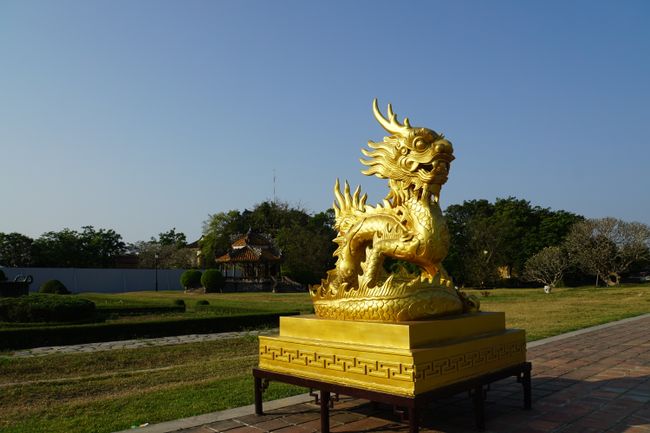
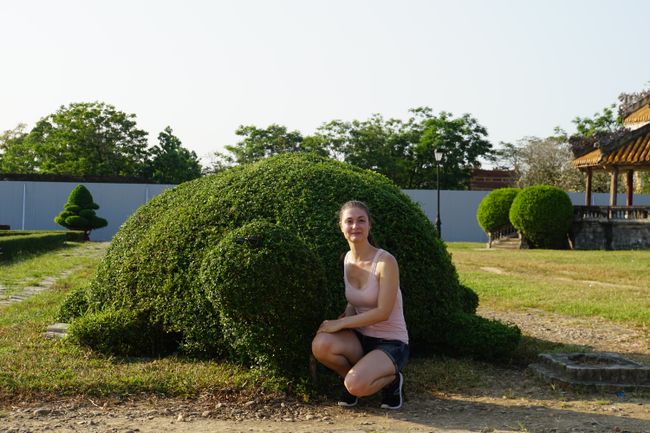
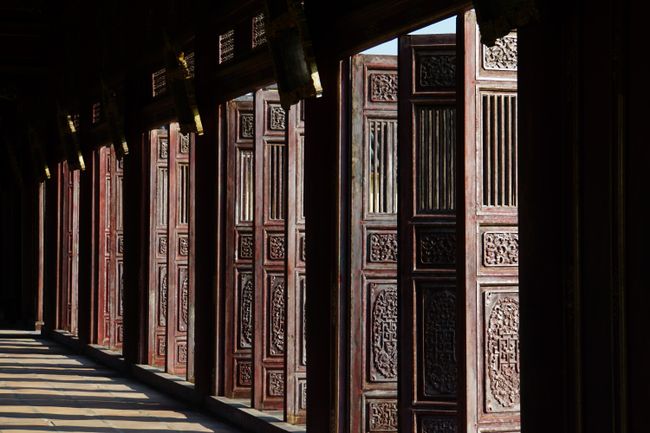
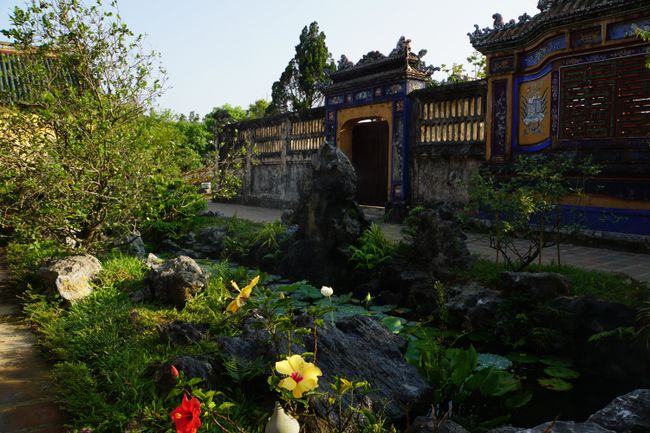
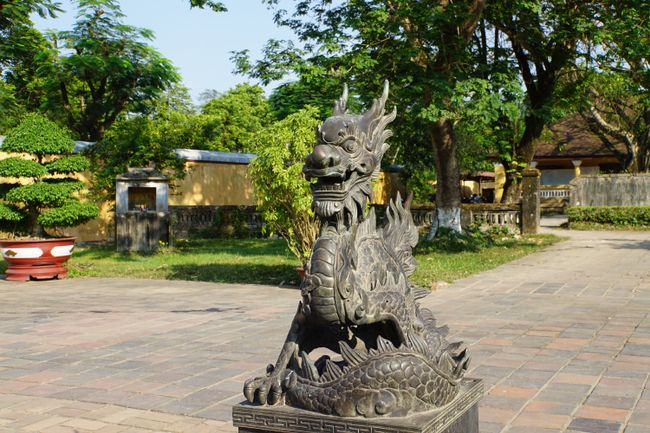
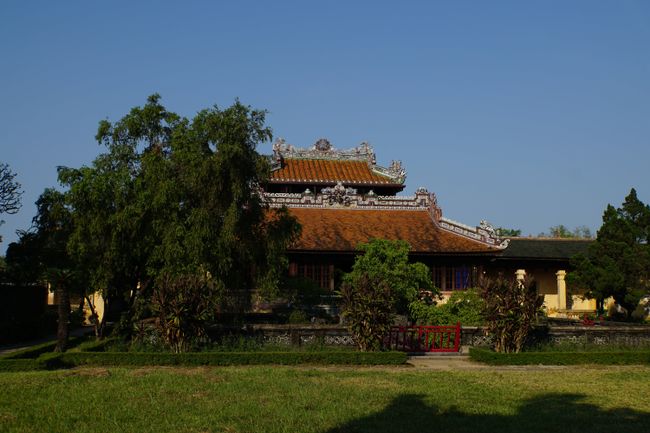
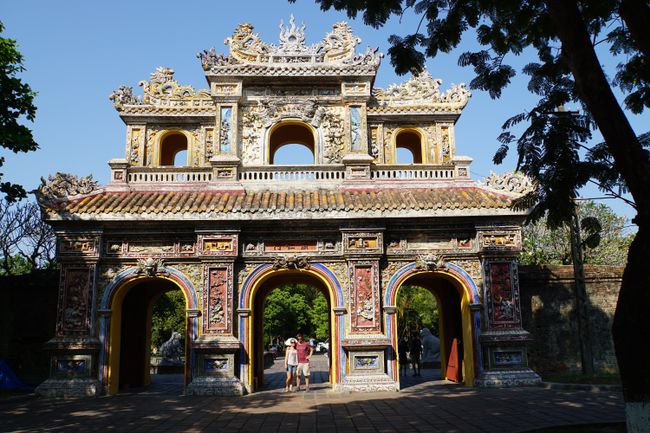
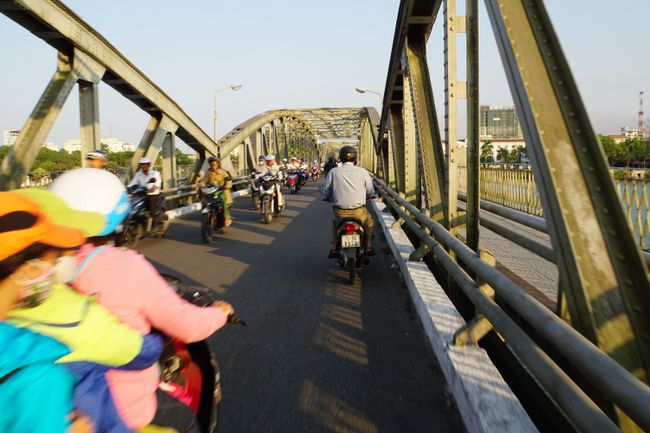
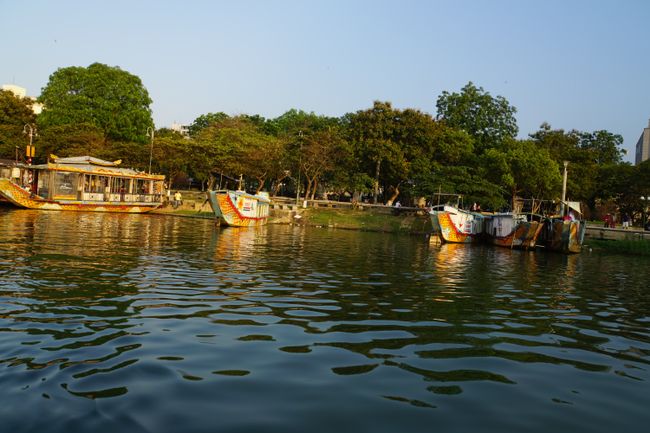
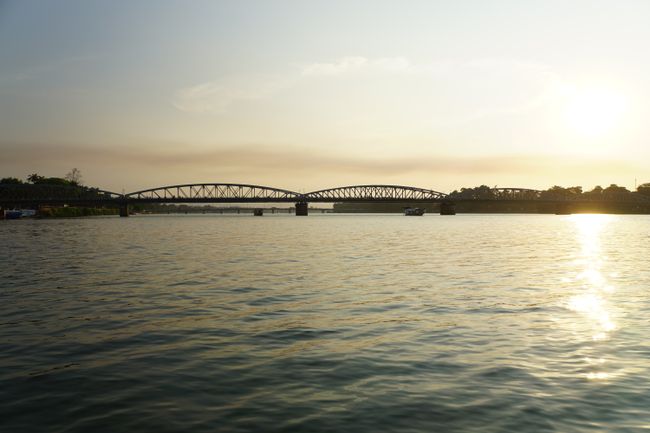
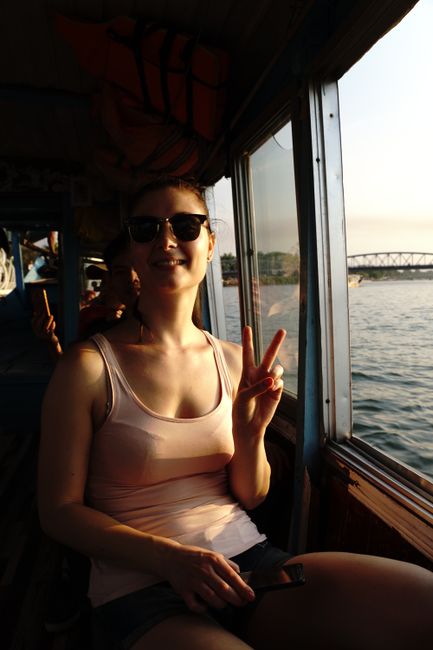
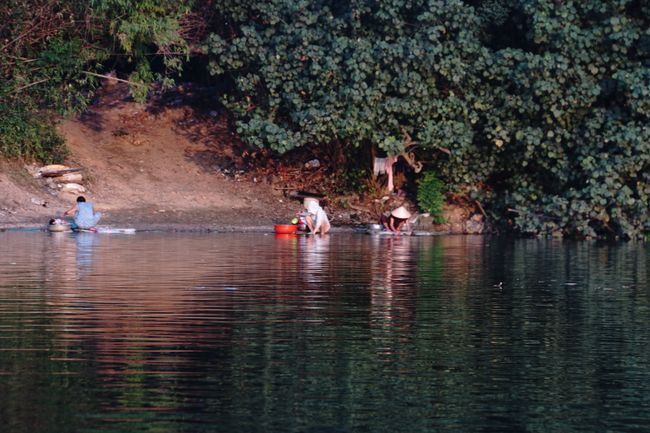
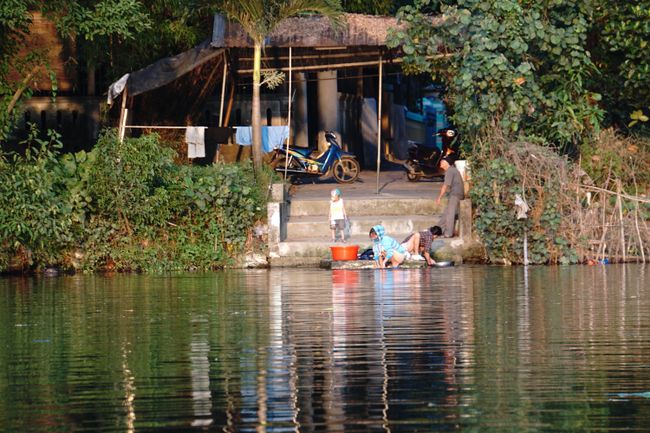
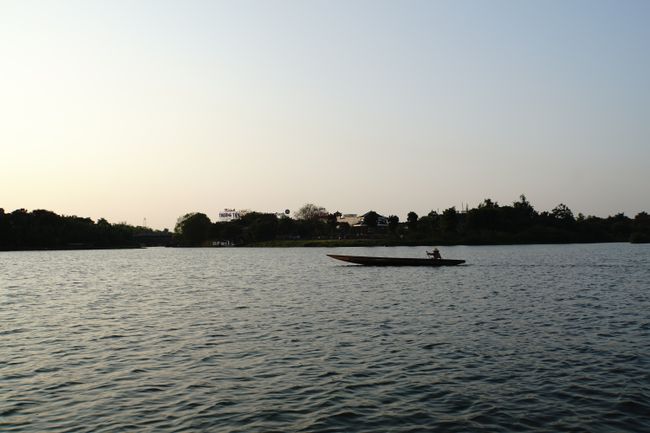
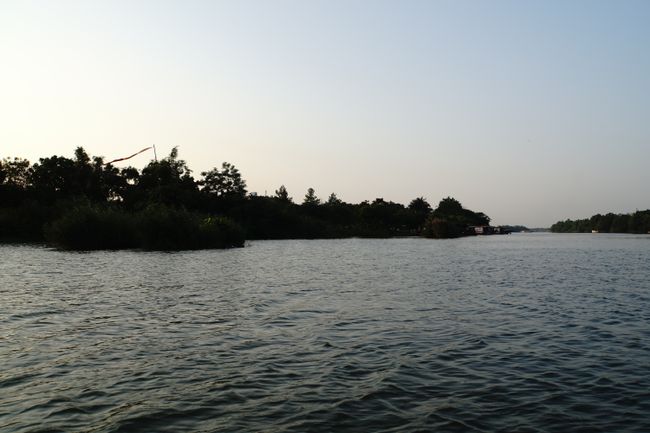
Абонирайте се за бюлетин
From Sa Pa we now head to Hanoi, where we drink coffee and make it to Roti King one more time to stock up on delicious sweet buns for the night bus trip to Hội An. We leave around 7pm sharp and arrive in Hội An after about 18 hours. The long journey on the sleeper bus with beds and blankets went surprisingly fast. We can walk to our hotel and check in. After a small lunch, we relax by the pool. Caro and Laura treat themselves to a spa manicure, while Markus continues to relax. Finally, a half-day of vacation! For dinner, we go to the restaurant Claypot, a small and delightful restaurant around the corner, where traditional dishes are cooked in clay pots. It tastes excellent and rounds off this relaxed afternoon perfectly.
The next day is a full day of sightseeing, as Carolyn only has one day in this small but charming city. We can rent bicycles from the hotel and in just 5 minutes we are in the historic Old Town of Hội An. The coastal city has around 75,000 inhabitants and feels just as crowded with tourists. They all flock to the city beaches or the Old Town, allegedly the only area that was largely unaffected during the Vietnam War and was declared a World Heritage Site by UNESCO in 1999.
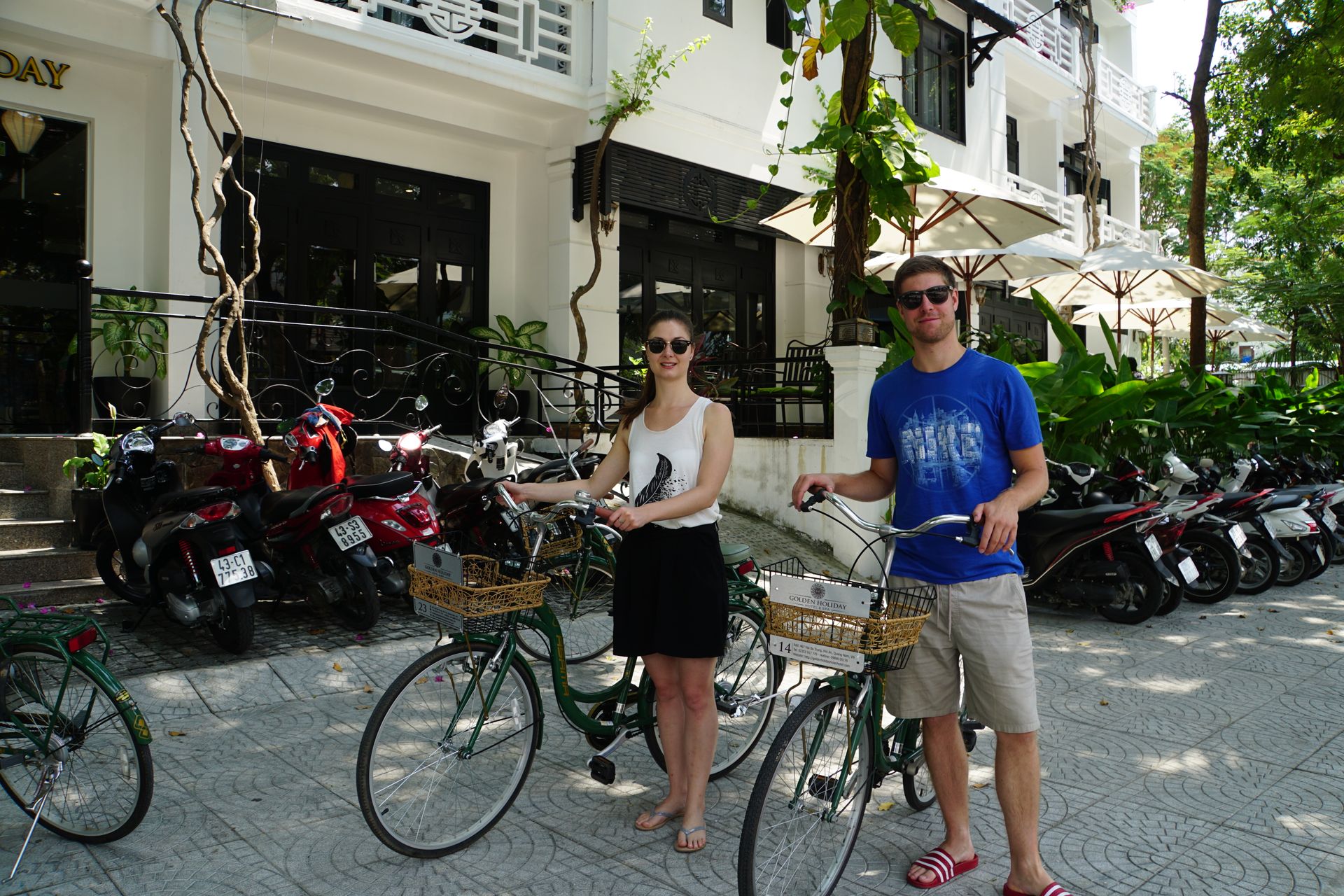
At our hotel, we get bicycles to explore the city and go to the beach 2km away
Hội An (meaning 'peaceful meeting place' in English) was once one of the largest ports in Southeast Asia. It was founded in the 4th century by the Cham people. Its strategic location on the Silk Road allowed many Japanese and Chinese traders to settle here, and the city only briefly lost its importance after the withdrawal of the Cham. The isolation of Japan, which completely withdrew from foreign trade in 1635, only moderately affected Hội An, as trade with Europe had been flourishing since 1613. As the port, the heart of the city, gradually silted up, the former trading center lost more and more significance and became a small provincial town, especially with the expansion of the railway line to Da Nang, located 30km to the north. This fact saved the unique architecture of the small Old Town, as during the Vietnam War, mainly the cities of Hue and Da Nang were heavily bombed while hardly anyone cared about Hội An.
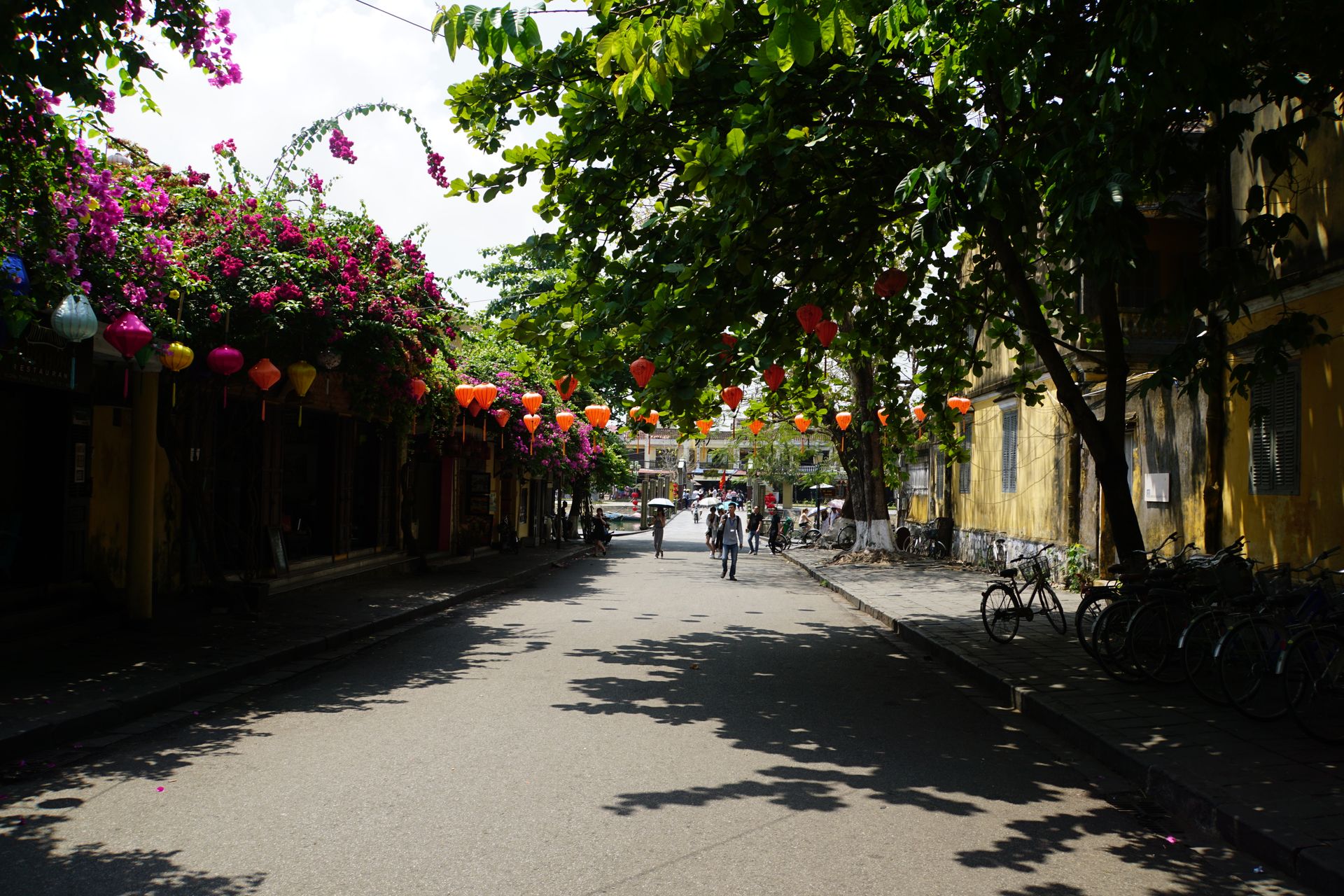
A street in the historic Old Town of Hội An
The buildings in the Old Town are unique in the world, as they combine Vietnamese, Chinese, and Japanese architectural styles like no other. You can buy a tourist ticket for about 5€ at the main entrances to the Old Town, which allows you to visit 5 of the total of 14 attractions. These include various buildings, temples, and museums. We first walk across the Chua Cau, the Japanese Bridge, whose entrances are guarded by dragons and monkeys.

The Japanese Bridge at night
Right behind it, we can visit a merchant's villa, where a lady in traditional attire points out the mixed architecture. The square courtyard with the inner terrace is typical Chinese, the roof is Japanese, and the walls and support pillars are Vietnamese. Since the city was regularly flooded during the rainy season, all inhabited rooms were located on the first floor, and there was a trapdoor through which goods and furniture stored on the ground floor could quickly be pulled up to safety. This, too, is typical of Hội An. They knew how to help themselves.

The trapdoor in the merchant's villa
Afterwards, we stroll through the alleyways. Every house here looks different. Sometimes wide, sometimes narrow, sometimes with thick shingles or only wooden tiles on the roof. The streets are clean, the houses are well-maintained, and many small boutiques offer beautiful goods. From silk scarves made from pashmina to handcrafted leather shoes and sandals. Handbags and ethically produced clothes are also available. Additionally, there is excellent coffee, harvested and roasted in Vietnam. The shopping heart beats faster here. We enjoy a coconut coffee by the river before heading to the beach.
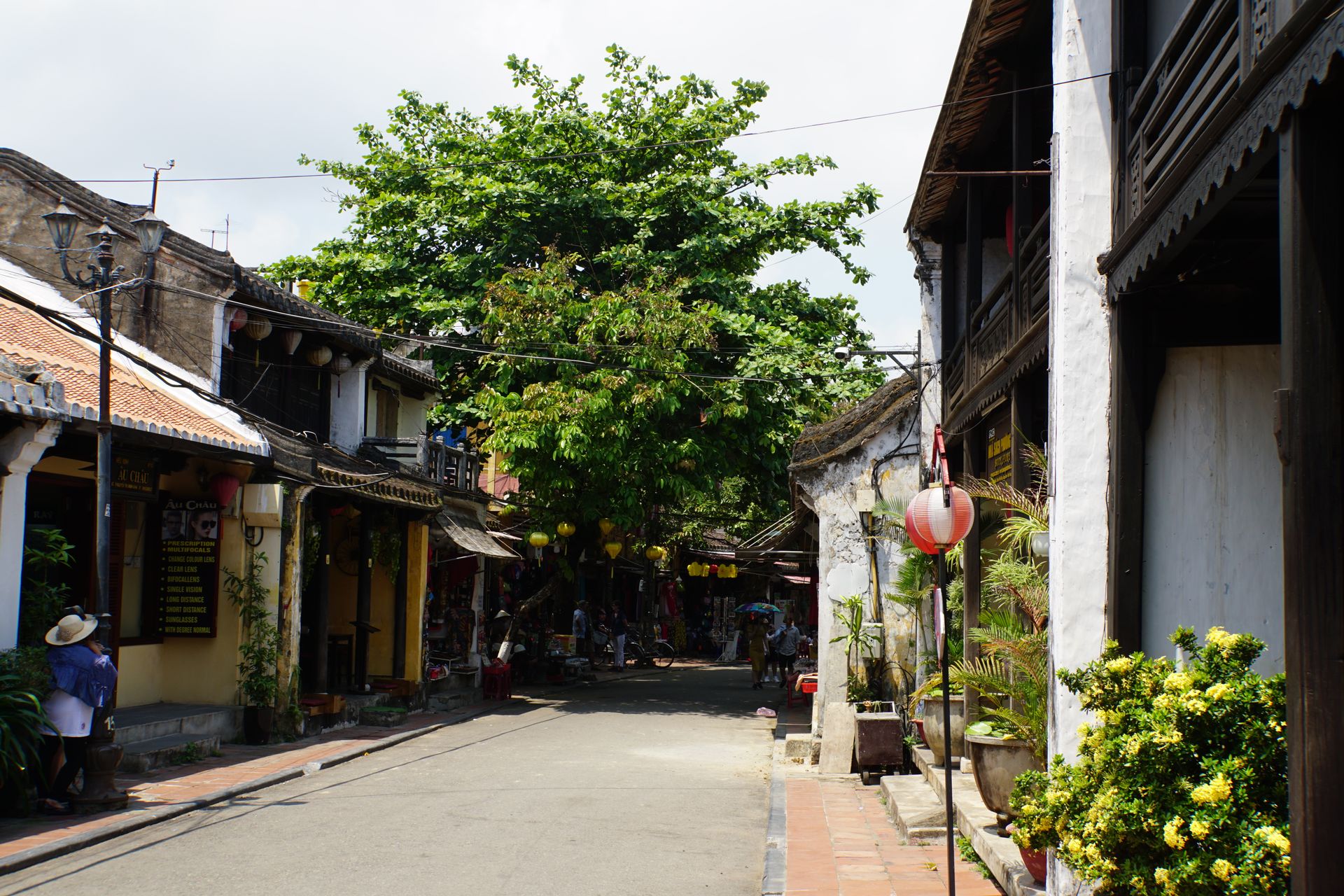
Every little house looks different here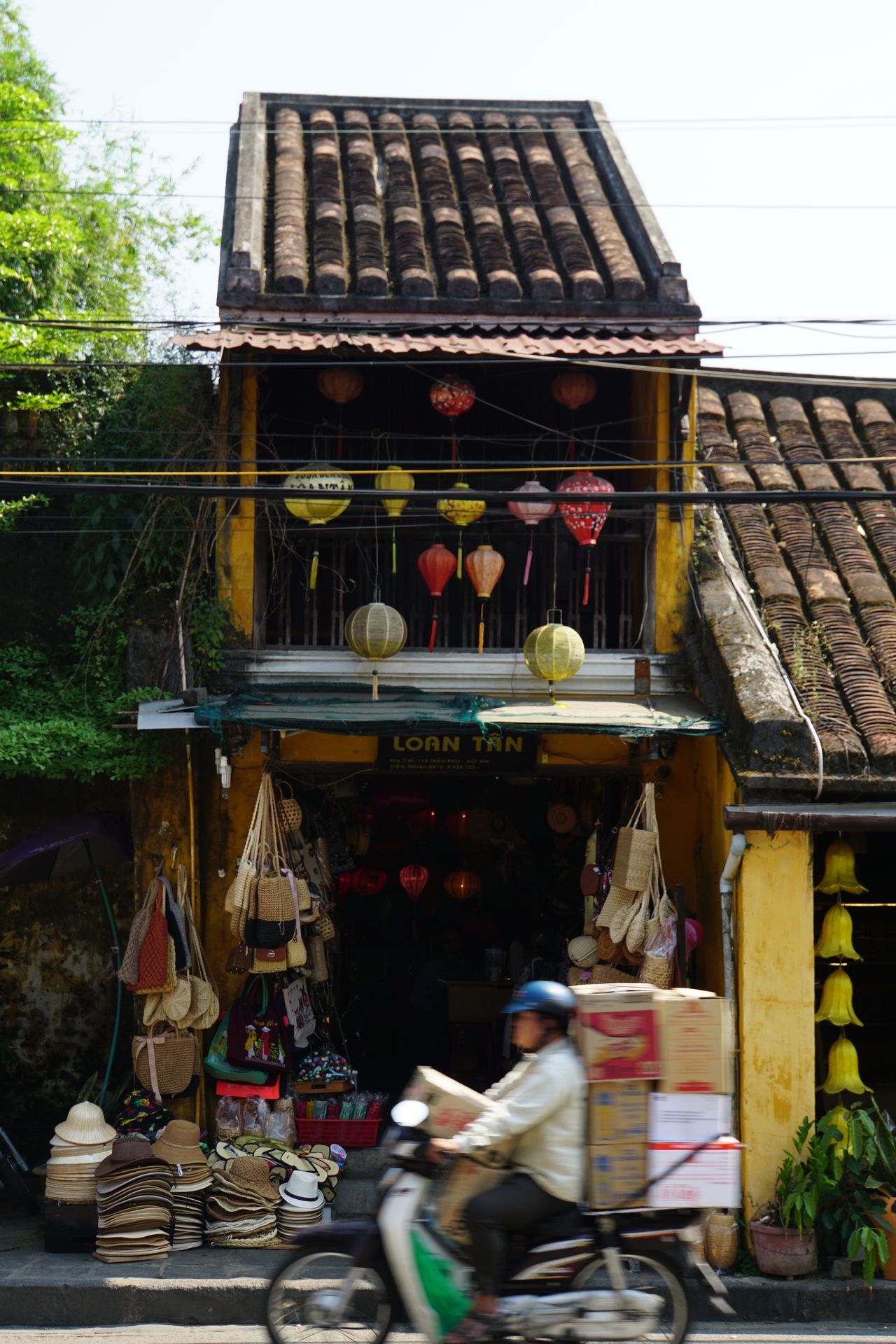 Small boutique
Small boutique
After a Banh Mi for lunch, we head to Bang Beach. The way there takes us through rice fields, past water buffaloes and farmers with their typical conical hats. It is picturesque and beautiful once we leave the hustle and bustle of the city behind. When we arrive at the beach, someone immediately takes care of our bicycles and we can choose a comfortable sun lounger under a thatched umbrella. We even get to use the sun loungers for free if we order a cocktail. Wonderful!
The beach is crowded. We feel like we're in Mallorca during high season. Tourists from all over the world gather here on the sand and in the water. Some with as little clothing as possible to tan as much skin as possible, others in full-body costumes to preserve their noble paleness. It's funny how cultures differ there. For our part, we enjoy our coconut and passion fruit mojito in the shade until the sun sets.
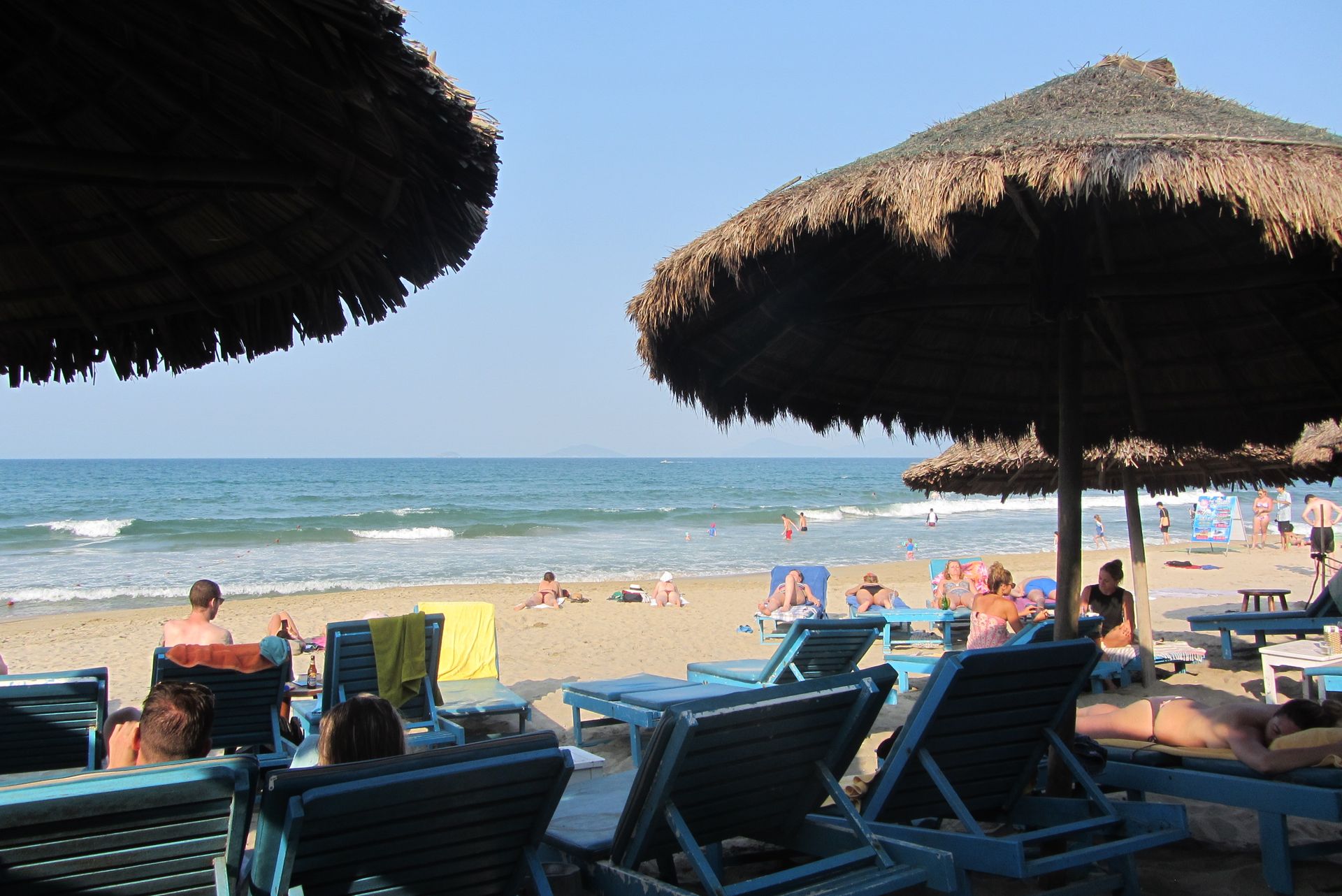
Relaxing under the parasol Cheers!
Cheers!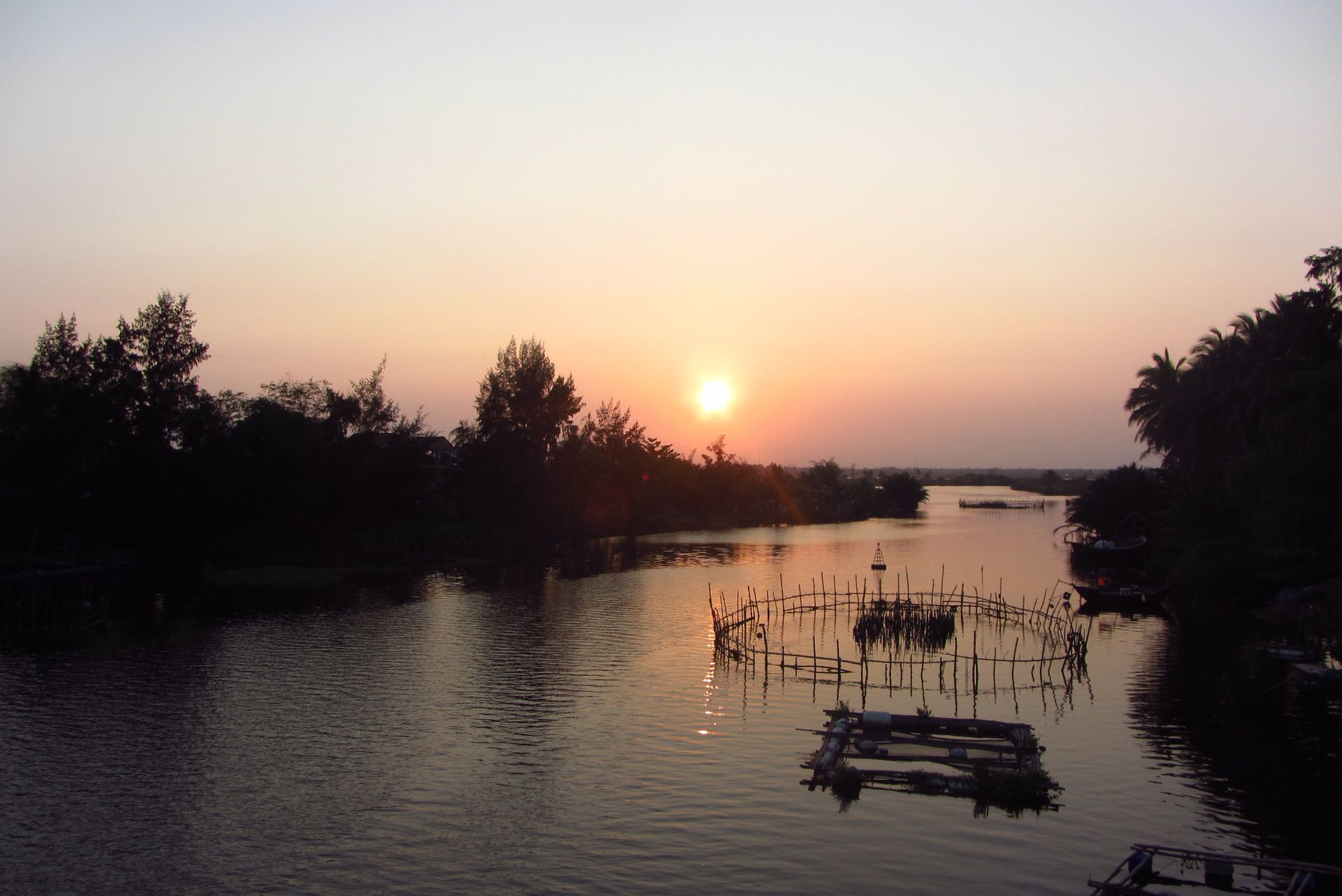 On the way back to the hotel during sunset
On the way back to the hotel during sunset
After this perfect afternoon, we head back to the Old Town. The many lanterns in the streets have raised high expectations, which are completely fulfilled. The alleyways are even busier than at noon. Tourists everywhere you look. Street vendors sell glowing hairbands and balloons or water lanterns. The streets are brightly illuminated by all the colorful lanterns in every conceivable shape, and the special buildings are beautifully staged. It's almost prettier than earlier in the day.
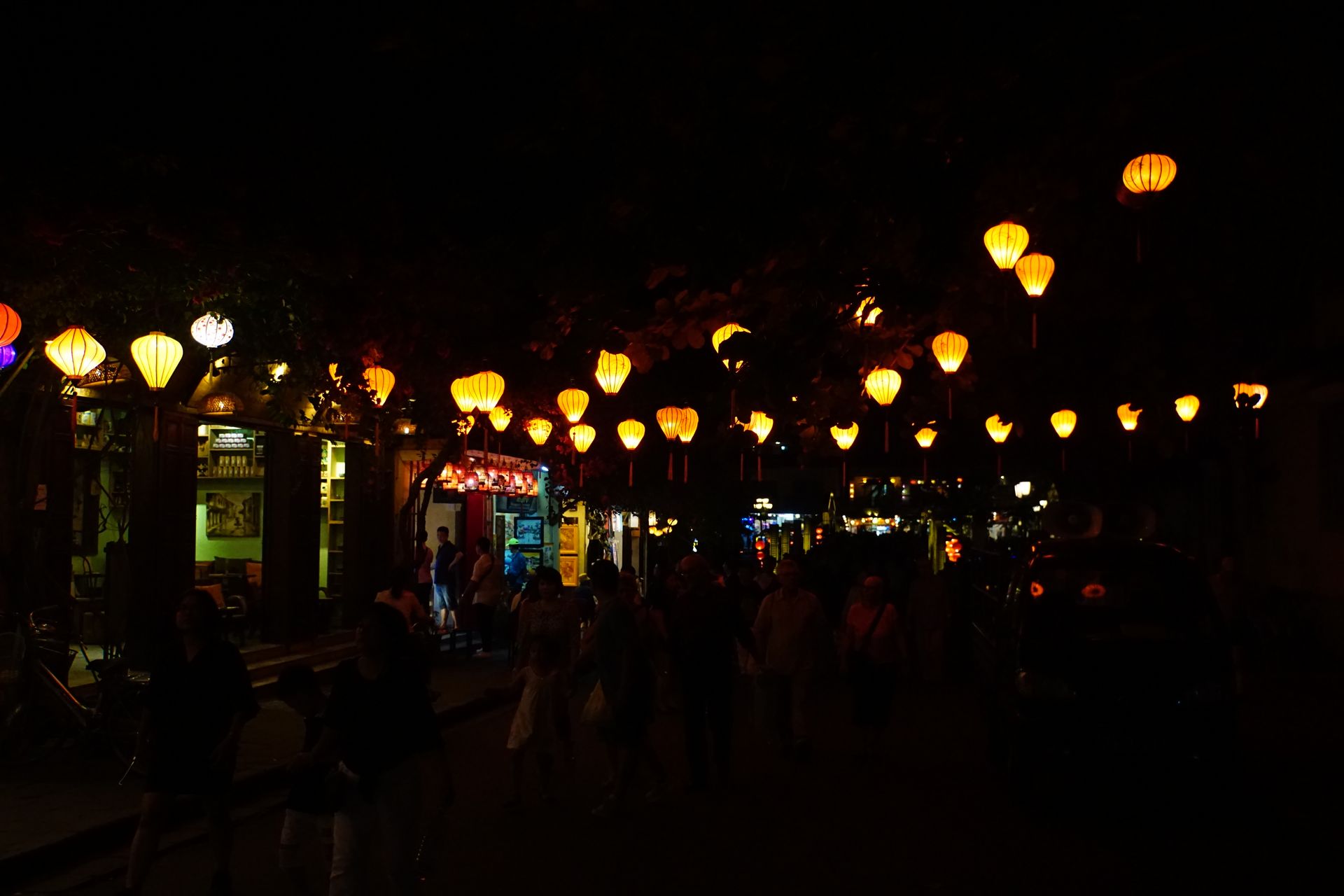
The lanterns illuminate the narrow alleys of the Old Town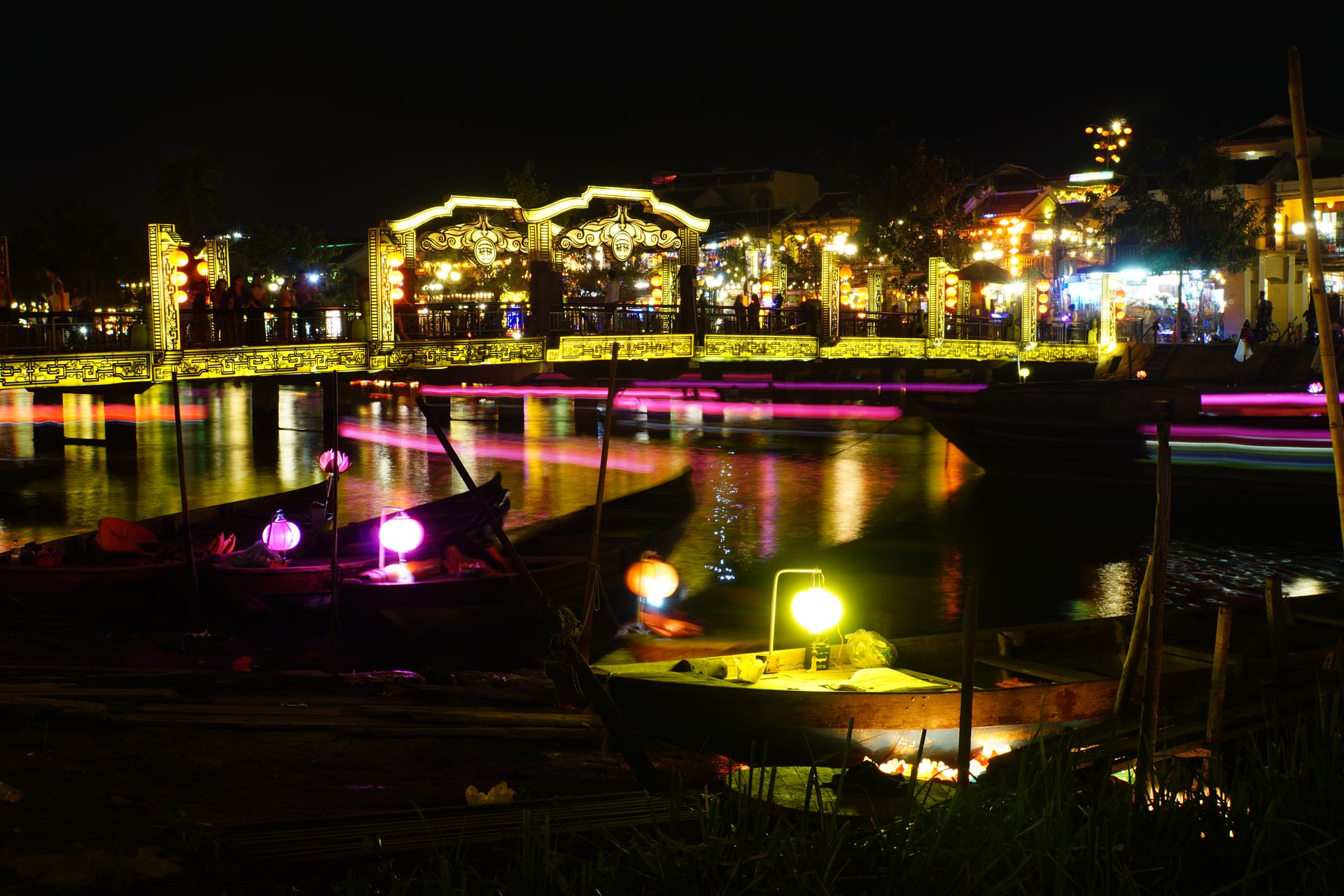 Gondolas and lanterns floating on the Thu Bon River
Gondolas and lanterns floating on the Thu Bon River
The next morning, we take the bus to Hué at 10 am. Carolyn flies from Hué to Hanoi tomorrow, and the day after tomorrow her flight to Germany departs. Therefore, we want to make use of the afternoon to visit the Citadel in Hué. With a population of 340,000, Hué is nearly five times larger than Hội An and is better connected thanks to the railway and airport. The city is located on the Huong Giang, also known as the Perfume River, as there are many plants with intensely fragrant blossoms on its banks. The landmark of Hué is the Citadel with the Forbidden City, the former palace complex of the Ngyuen Dynasty (1802-1945), which was built following the example of the Forbidden City of the Ming Dynasty in China. As long as the emperor resided there, Hué was also the capital of Vietnam and was only replaced by Hanoi again in 1946.
The Citadel is huge. A 10km long earthen wall surrounds the square layout of the complex, which is surrounded by a water moat over 20m wide. The imperial family lived in the center of the complex in several purple-colored buildings, surrounded by beautifully landscaped gardens and artificial streams. There are also several temples, pagodas, and administrative buildings on the premises. During the Tet Offensive (a series of offensives launched by the North Vietnamese Army and the Viet Cong) between January and October 1968, the North Vietnamese Army and the Viet Cong took positions within the Citadel, prompting the US military to carry out targeted attacks on the area, resulting in the almost complete destruction of the former imperial city until the end of the fighting. Only two temples miraculously remained largely unscathed. The Citadel has been under renovation and reconstruction for several years. The major renovation work was completed from 2008 to 2015. We still see where the bombs wreaked havoc, but we can still get a good picture of the luxury in which the emperors lived.
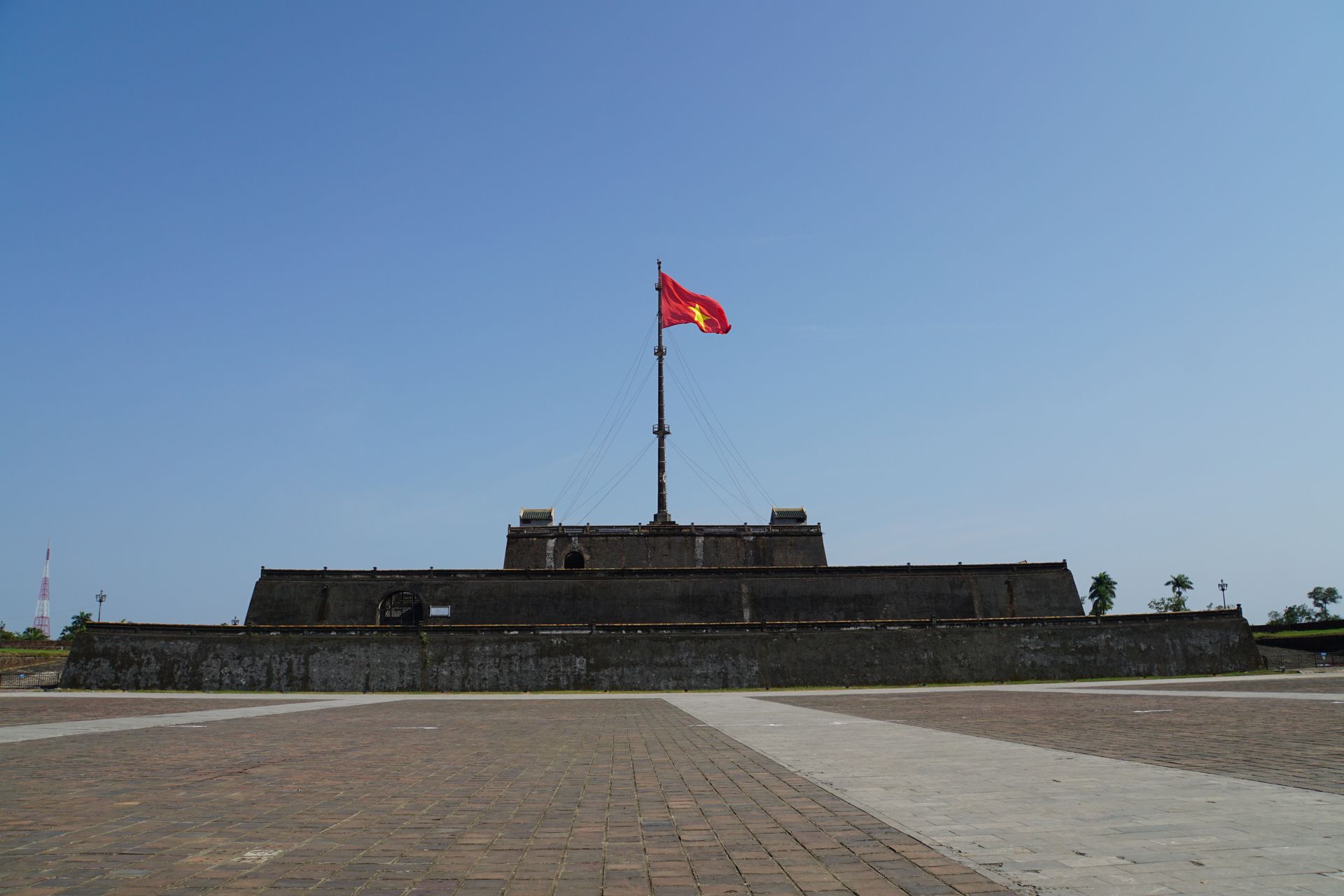
At the entrance of the fortification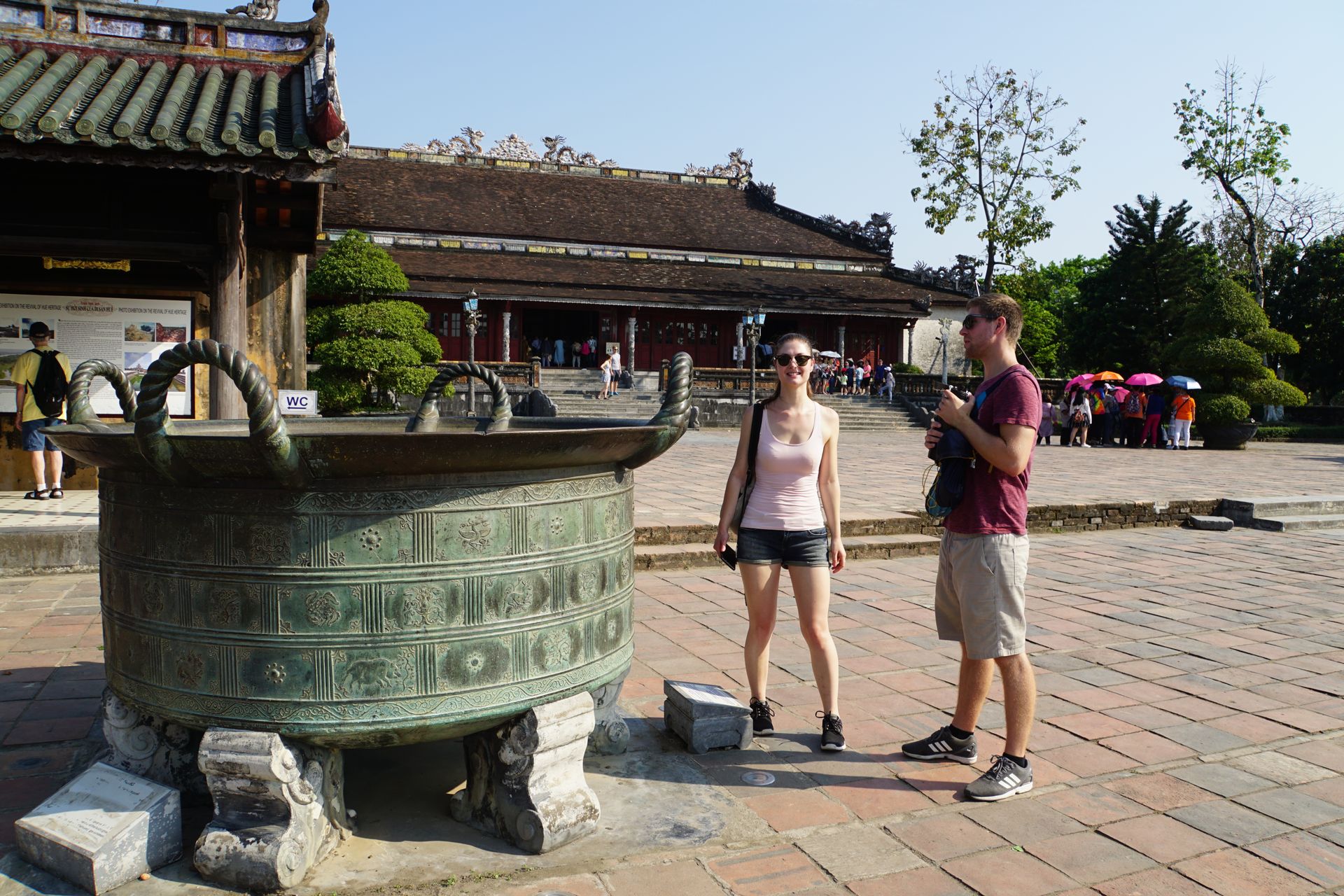 The huge copper kettles symbolize the emperor's claim to power
The huge copper kettles symbolize the emperor's claim to power
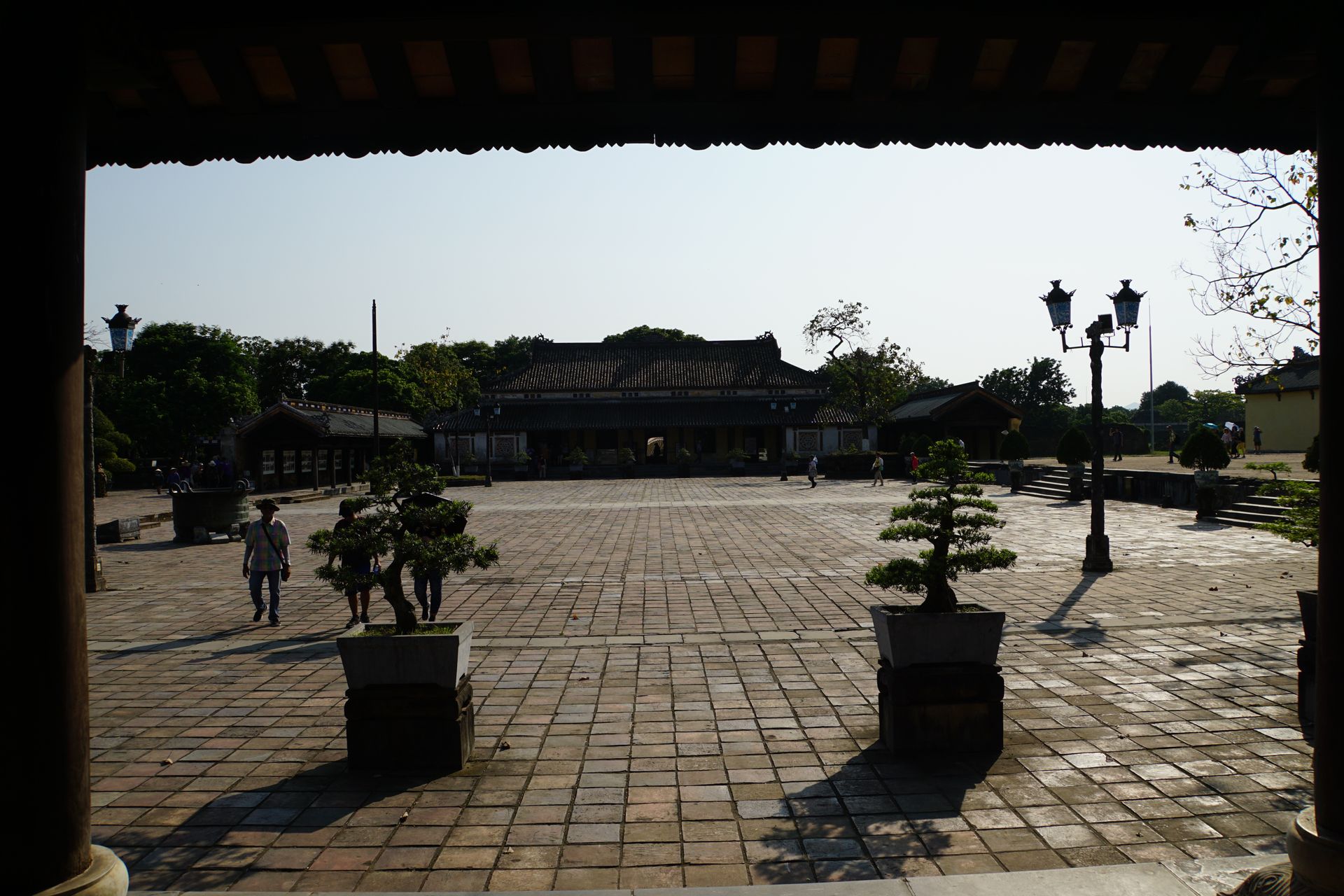
One of the squares in the Citadel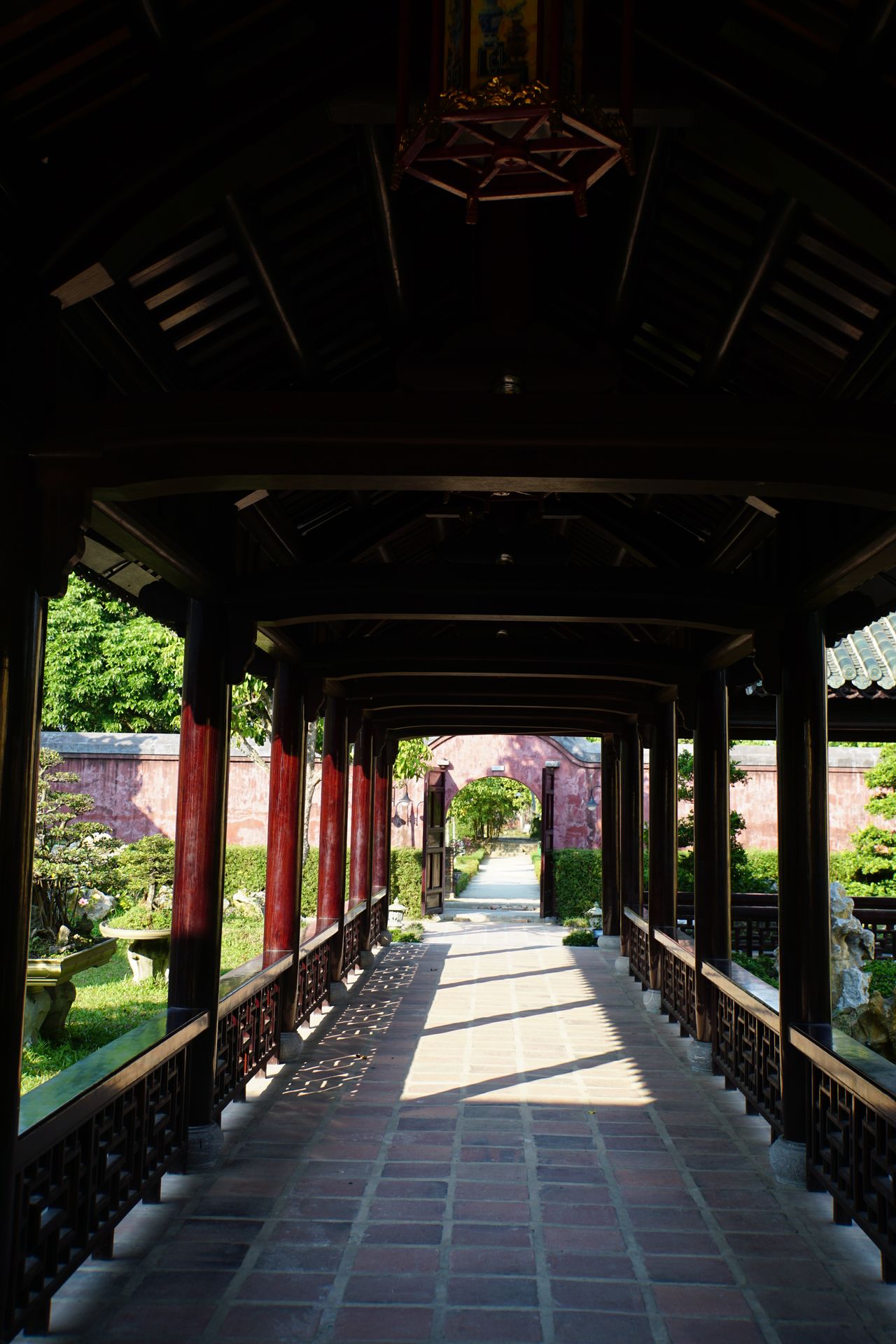 Arcade in the Purple City
Arcade in the Purple City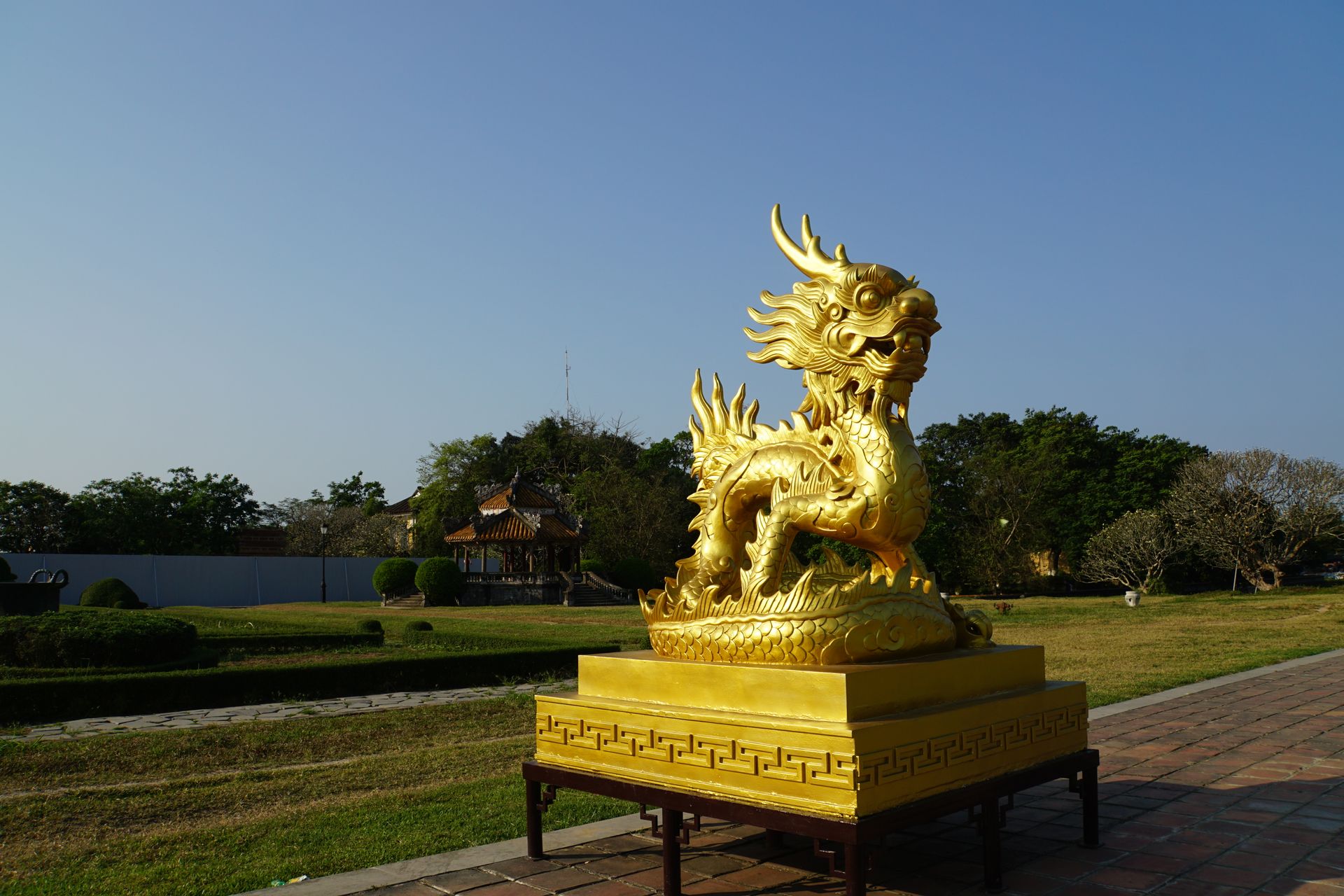 Falkor guards the building complex
Falkor guards the building complex
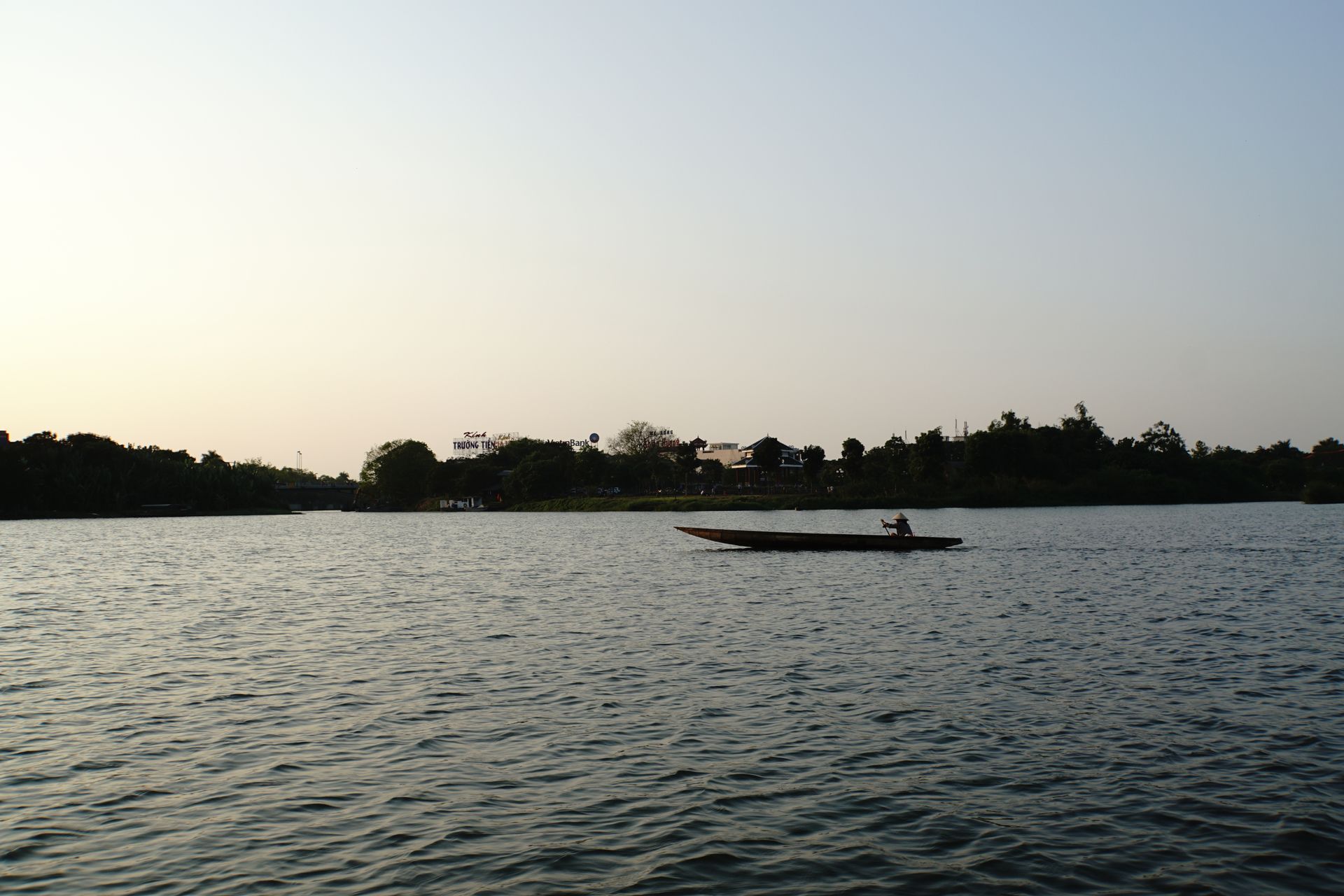
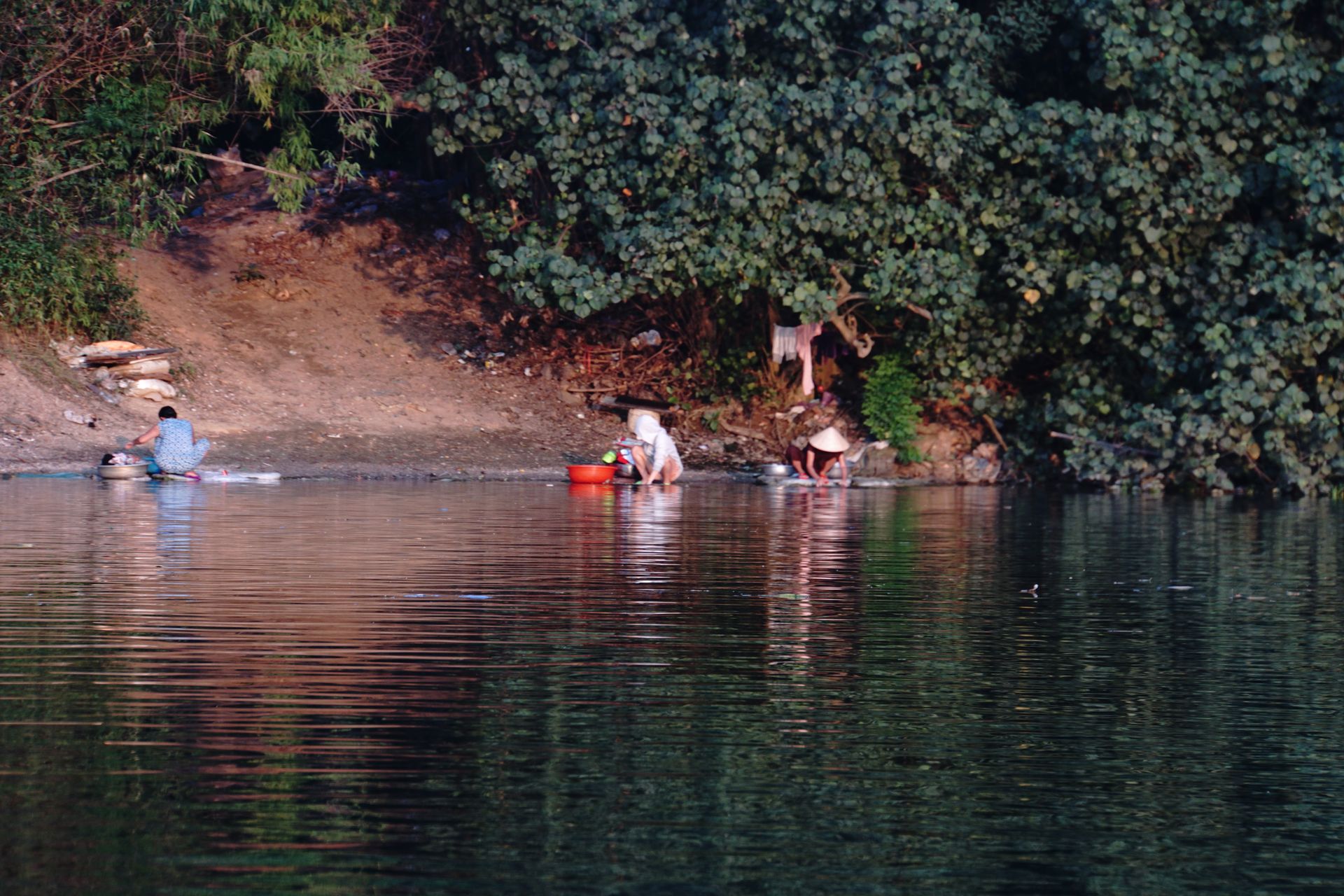
Residents washing their laundry in the river
After a cozy dinner with well-deserved cocktails, our trip to Hué ends. The next morning, Carolyn is driven to the airport, and Markus and I take the bus back to Hội An. Here we spend five very relaxing days. Hội An is famous for its tailors, and since we have a few weddings to attend this year, we don't miss the opportunity. We are more than pleasantly surprised when, after two days and three fittings, we are wearing perfectly fitting suits. We also had matching shoes made to measure. And all of this for a really small amount of money, considering how much work and quality is put into our new clothes. We went to Bebe Taylor and can highly recommend them.
From Da Nang, we treat ourselves to a flight to Ho Chi Minh City, as we don't need another 24-hour bus ride after all the relaxation. But more on that in the next blog.
Абонирайте се за бюлетин
Отговор
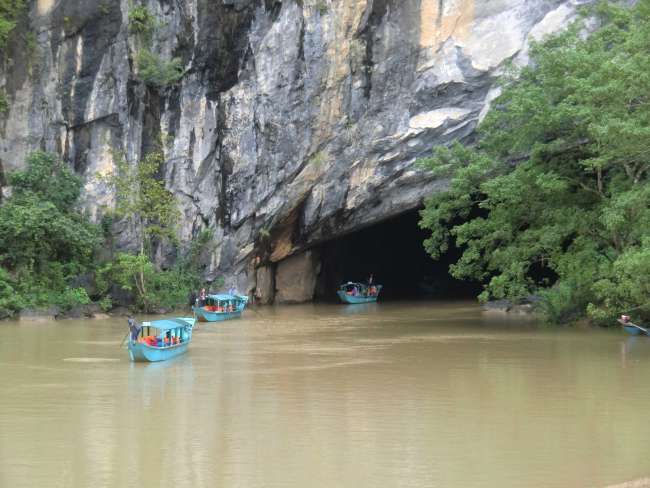
Отчети за пътуване Виетнам
